
Oxygen - Essential for Respiration

Quran Chapter 57, Verse 2 states: “To Him belongs the dominion of the heavens and the earth; He gives life and causes death, and He is over all things competent.” This verse emphasizes Allah’s complete sovereignty and control over all aspects of creation, including essential elements such as oxygen, vital for respiration and sustaining life, exemplifies Allah’s meticulous design and profound wisdom.
The Significance of Oxygen in Creation
Oxygen as a Vital Element:
Oxygen is crucial for the survival of almost all living organisms. It plays a fundamental role in cellular respiration, allowing cells to extract energy from nutrients.
Allah’s Dominion Over Elements:
The verse highlights Allah’s control over all elements in the universe, including oxygen. This dominion reflects His power to create and sustain life through precise natural processes.
Respiration and Life:

Cellular respiration, which depends on oxygen, is the process by which cells produce energy. Without oxygen, cells cannot function, leading to the cessation of life. This demonstrates Allah’s provision and maintenance of life through essential elements.
Photosynthesis and Oxygen Production:
Plants produce oxygen through photosynthesis, converting carbon dioxide and water into glucose and oxygen using sunlight. This process underscores Allah’s wisdom in creating a self-sustaining system that balances oxygen levels on Earth.
Balance of Oxygen in the Atmosphere:
The Earth’s atmosphere contains approximately 21% oxygen, a perfect balance for life. Too much or too little oxygen would be harmful. This precise balance reflects Allah’s intricate design and His ability to maintain harmony in nature.
Reflection on Quran Chapter 57, Verse 2
“To Him belongs the dominion of the heavens and the earth”:
This part of the verse establishes Allah’s ownership and control over all creation, including the atmospheric elements essential for life. Oxygen, as a part of the Earth’s atmosphere, is under Allah’s dominion.
“He gives life and causes death”:
Allah’s control over life and death is evident in His provision of oxygen. The presence of oxygen sustains life, while its absence leads to death, showcasing Allah’s power over the life cycle.
“He is over all things competent”:
Allah’s competence and mastery over creation are reflected in the precise regulation of oxygen levels. This competency ensures that all living beings have the necessary conditions for survival.
Understanding the Divine Wisdom
Interconnected Systems:
The interdependence of oxygen production (via photosynthesis) and oxygen consumption (via respiration) illustrates the interconnectedness of life systems, all orchestrated by Allah’s wisdom.
Human Dependency on Oxygen:
Humans, like all aerobic organisms, depend on oxygen for survival. This dependency highlights the continuous need for Allah’s provision and mercy.
Medical Implications:
The importance of oxygen in medical treatments, such as oxygen therapy for patients with respiratory issues, underscores its critical role in health and Allah’s provision for healing.
Environmental Stewardship:
Recognizing oxygen’s importance encourages environmental stewardship. Preserving plant life and forests, which produce oxygen, aligns with the Islamic principle of taking care of Allah’s creation.
Conclusion
Quran Chapter 57, Verse 2 encapsulates Allah’s dominion over all creation, including essential elements like oxygen. This verse illustrates Allah’s sovereignty, wisdom, and competence in sustaining life through meticulously balanced natural processes. Understanding the role of oxygen in respiration and life highlights the profoundness of Allah’s creation and inspires gratitude, reflection, and responsible stewardship of the environment. Through the lens of this verse, believers gain a deeper appreciation of Allah’s unparalleled power and the intricate design of the universe.
Water - Vital for all forms of life

Quran Chapter 2, Verse 22 states: “Who has made for you the earth a bed [spread out] and the sky a canopy and sent down from the sky rain and brought forth thereby fruits as provision for you. So do not attribute to Allah equals while you know [that there is nothing similar to Him].” This verse emphasizes the fundamental role of water in sustaining life, highlighting its divine provision and essential nature. Here, we explore the significance of water as described in this verse, acknowledging its critical importance and the evidence of its necessity for all forms of life.
The Significance of Water in Creation
Water as a Vital Element:

Water is essential for the survival of all living organisms. It is involved in various biological processes, including hydration, nutrient transportation, and cellular function.
Divine Provision of Water:
The verse highlights that Allah sends down rain from the sky, emphasizing that water is a divine gift essential for life and sustenance.
Role of Rain in Sustaining Life:
Rain is crucial for replenishing water sources, nourishing plants, and supporting ecosystems. It ensures the availability of fresh water for drinking, agriculture, and other necessities.
Water and Plant Growth:
Water is necessary for photosynthesis, the process by which plants produce food. Through rain, Allah brings forth fruits and vegetation, providing sustenance for humans and animals.
Hydrological Cycle:
The continuous movement of water on, above, and below the surface of the Earth, known as the hydrological cycle, demonstrates Allah’s intricate design in maintaining life-sustaining water sources.
Reflection on Quran Chapter 2, Verse 22
“Who has made for you the earth a bed [spread out] and the sky a canopy”:
This part of the verse highlights Allah’s creation of a hospitable environment for life, including the provision of water through rain.
“And sent down from the sky rain”:
Rain is depicted as a direct blessing from Allah, essential for life. It replenishes rivers, lakes, and underground aquifers.
“And brought forth thereby fruits as provision for you”:
The growth of fruits and crops through rainwater illustrates the direct connection between divine provision and sustenance.
“So do not attribute to Allah equals”:
This reminder emphasizes the importance of acknowledging Allah’s sole sovereignty and the unique provision of life-sustaining resources like water.
Understanding the Divine Wisdom
Interdependence of Water and Life:
Water is integral to the survival of all forms of life, showcasing Allah’s wisdom in creating an interconnected and balanced ecosystem.
Human Dependency on Water:
Humans depend on water for drinking, sanitation, agriculture, and industry, reflecting its central role in daily life and health.
Agricultural Productivity:
Water is crucial for agriculture, which is the foundation of food security. It supports the growth of crops and livestock.
Environmental Balance:
The natural regulation of water through the hydrological cycle maintains environmental balance, supporting diverse ecosystems.
Water as a Source of Purity:
In Islam, water is also a symbol of purification, used for ablution and cleansing, underscoring its spiritual significance.
Evidence of Allah’s Mercy:
The provision of water is a clear sign of Allah’s mercy and care for His creation, ensuring that all living beings have access to this vital resource.
Sustaining Ecosystems:
Water supports various ecosystems, ensuring biodiversity and the health of the planet.
Scientific Discoveries:
Modern science confirms the Quranic view of water’s centrality to life, from cellular processes to global ecosystems.
Climate and Weather Patterns:
Allah’s control over rain and weather patterns illustrates His power and the dynamic processes sustaining life on Earth.
Water Scarcity Awareness:
Understanding the importance of water encourages efforts to preserve and manage this precious resource responsibly.
Role in Health:
Water is essential for bodily functions, including digestion, circulation, and temperature regulation, highlighting its necessity for health.
Spiritual Reflection:
Reflecting on the provision of water leads to greater appreciation of Allah’s blessings and encourages gratitude.
Social and Economic Development:
Access to water is critical for social and economic development, impacting education, livelihoods, and community well-being.
Role in Natural Disasters:
Water-related natural disasters, such as floods and droughts, reflect the delicate balance of nature and the need for divine mercy and protection.
Symbol of Life:
Water symbolizes life itself, reflecting its foundational role in sustaining all living creatures.
Ultimate Source:
Recognizing Allah as the ultimate source of water reinforces faith and reliance on His provision and wisdom.
Conclusion
Quran Chapter 2, Verse 22 highlights the essential nature of water, a divine provision vital for all forms of life. This verse illustrates Allah’s sovereignty, wisdom, and mercy in sustaining life through the precise regulation of water resources. Understanding the role of water in life processes and environmental balance underscores the profoundness of Allah’s creation and inspires gratitude, reflection, and responsible stewardship of this invaluable resource. Through this verse, believers are reminded of their dependence on Allah’s sustenance and the ultimate goal of achieving closeness to Him through appreciation and obedience. For more info; QuranExplains.com
Sunlight - Provides energy and sustains ecosystems

Quran Chapter 41, Verse 37 states: “And of His signs are the night and the day and the sun and the moon. Do not prostrate to the sun or to the moon, but prostrate to Allah, who created them, if it should be Him that you worship.” This verse emphasizes Allah’s creation of celestial bodies, including the sun, which provides essential energy and sustains ecosystems. Here, we explore the significance of sunlight in maintaining life on Earth, highlighting its divine origin and the intricate balance it provides.
The Significance of Sunlight in Creation
Sunlight as a Vital Source of Energy:

Sunlight is the primary source of energy for Earth, driving photosynthesis in plants and influencing climate and weather patterns.
Role in Photosynthesis:
Plants convert sunlight into chemical energy through photosynthesis, producing oxygen and glucose. This process is fundamental for the survival of plants and, by extension, all life forms that depend on plants for oxygen and food.
Sustaining Ecosystems:
Sunlight supports diverse ecosystems by providing the energy necessary for growth, reproduction, and survival of various species.
Regulation of Climate:
The sun’s energy regulates Earth’s climate, influencing temperature, weather patterns, and seasonal cycles, which are crucial for the natural balance.
Circadian Rhythms:
Sunlight affects circadian rhythms in humans and animals, governing sleep-wake cycles, hormonal regulation, and overall health.
Reflection on Quran Chapter 41, Verse 37
“And of His signs are the night and the day and the sun and the moon”:
This part of the verse highlights the alternation of day and night and the creation of the sun and moon as signs of Allah’s power and wisdom.
“Do not prostrate to the sun or to the moon”:
It emphasizes that these celestial bodies, despite their crucial roles, are creations of Allah and should not be worshipped. Worship is due to Allah alone.
“But prostrate to Allah, who created them”:
This command directs believers to recognize and worship the Creator, not the creation, acknowledging Allah’s ultimate authority and power.
Understanding the Divine Wisdom
Energy Production:
The sun generates immense amounts of energy through nuclear fusion, a process reflecting Allah’s power in sustaining the universe.
Growth and Agriculture:
Sunlight is essential for agriculture, enabling crops to grow and providing food for humans and animals.
Vitamin D Synthesis:
Exposure to sunlight enables the human body to produce Vitamin D, vital for bone health and immune function.
Solar Energy:

The harnessing of solar energy for electricity and heating demonstrates the versatility and sustainability of sunlight as a resource.
Seasonal Changes:
The tilt of the Earth’s axis and its orbit around the sun result in seasonal changes, supporting diverse agricultural cycles and ecosystems.
Water Cycle:
Sunlight drives the water cycle by causing evaporation, which leads to cloud formation and precipitation, replenishing freshwater sources.
Photosynthetic Efficiency:
The efficiency of photosynthesis varies with the intensity and duration of sunlight, influencing plant productivity and ecosystem health.
Life Cycles:
Sunlight influences the life cycles of various organisms, including breeding, migration, and hibernation patterns.
Mental Health:
Sunlight exposure is linked to improved mood and mental health, reducing the risk of depression and other disorders.
Ecological Interactions:
Sunlight affects predator-prey relationships, plant-pollinator interactions, and other ecological dynamics crucial for ecosystem stability.
Technological Innovations:
Advances in solar technology reflect human ingenuity in utilizing sunlight for sustainable energy solutions.
Environmental Balance:
The sun’s energy maintains the balance between heat and cold, enabling diverse habitats to thrive.
Spiritual Reflection:
Reflecting on the role of sunlight encourages gratitude for Allah’s provision and fosters a deeper appreciation of His creation.
Historical Significance:
Ancient civilizations revered the sun for its life-giving properties, although Islam directs this reverence to Allah, the Creator of the sun.
Astronomical Observations:
The study of the sun and its behavior enhances our understanding of the cosmos and the precision of Allah’s design.
Global Impact:
Sunlight affects global patterns such as ocean currents and wind systems, essential for weather and climate stability.
Ultimate Source:
Recognizing Allah as the ultimate source of sunlight reinforces the belief in His comprehensive power and sustenance.
Conclusion
Quran Chapter 41, Verse 37 highlights the essential role of the sun and moon as signs of Allah’s power and wisdom. Sunlight, as a vital source of energy, sustains life through photosynthesis, regulates climate, and supports diverse ecosystems. This verse illustrates the importance of recognizing and worshipping Allah as the Creator of these celestial bodies, emphasizing His ultimate authority and provision. Understanding the multifaceted impact of sunlight on life encourages gratitude, reflection, and a deeper appreciation of Allah’s intricate and sustaining creation. For more info visit, quranexplains.com
Air - Necessary for breathing

Quran Chapter 16, Verse 79 states: “Do they not see the birds controlled in the atmosphere of the sky? None holds them up except Allah. Indeed in that are signs for a people who believe.” This verse emphasizes Allah’s power and the miraculous nature of air, which is essential for breathing and sustains all forms of life. Here, we explore the significance of air as a vital element for the survival of 8 billion people and countless creatures, illustrating Allah’s greatness and the intricate balance of His creation.
The Significance of Air in Creation
Air as a Vital Element:
Air, composed mainly of nitrogen and oxygen, is essential for the survival of all aerobic organisms. It facilitates respiration, which is crucial for sustaining life.
Oxygen and Respiration:
Oxygen, a key component of air, is necessary for cellular respiration, enabling cells to produce energy from nutrients. This process is fundamental for the functioning of all living beings.
Carbon Dioxide Exchange:
Through breathing, humans and animals take in oxygen and expel carbon dioxide, which plants then use for photosynthesis, maintaining a balanced ecosystem.
Atmospheric Regulation:
The atmosphere acts as a protective layer, regulating temperature and shielding the Earth from harmful solar radiation, creating a habitable environment for life.
Air and Flight:
The verse specifically mentions birds in flight, highlighting the role of air in enabling flight through principles of aerodynamics, all governed by Allah’s design.
Reflection on Quran Chapter 16, Verse 79
“Do they not see the birds controlled in the atmosphere of the sky?”:
This part of the verse draws attention to the remarkable phenomenon of birds flying, supported by the invisible yet crucial element of air.
“None holds them up except Allah”:
It emphasizes that Allah’s power and will sustain the laws of physics that allow birds to fly, showcasing His control over natural processes.
“Indeed in that are signs for a people who believe”:
This phrase encourages believers to reflect on the wonders of creation as signs of Allah’s existence, power, and wisdom.
Understanding the Divine Wisdom

Air Composition and Balance:
The precise composition of air, with about 21% oxygen, is perfectly balanced to support life. Too much or too little oxygen would be harmful, reflecting Allah’s meticulous design.
Sustaining 8 Billion People:
The atmosphere provides a continuous supply of air for 8 billion people, illustrating Allah’s provision and sustenance for all of humanity.
Countless Creatures:
Beyond humans, air supports the lives of countless animals, insects, and microorganisms, showcasing the vastness of Allah’s creation and care.
Breathing Mechanism:
The human respiratory system, which efficiently exchanges oxygen and carbon dioxide, demonstrates Allah’s intricate design and engineering.
Photosynthesis and Air Purification:
Plants play a crucial role in maintaining air quality by absorbing carbon dioxide and releasing oxygen, reflecting the interdependence of life forms designed by Allah.
Air and Weather Patterns:
Air circulation drives weather patterns, distributing heat and moisture around the globe, essential for agriculture and maintaining diverse climates.
Health and Air Quality:
Clean air is vital for health, and Allah’s creation includes natural processes that purify and maintain air quality, such as the action of plants and the movement of winds.
Atmospheric Pressure:
The precise regulation of atmospheric pressure enables breathing and the functioning of various ecosystems, reflecting Allah’s control over natural laws.
Flight and Aerodynamics:
The principles of flight, utilized by birds and human-engineered aircraft, rely on the properties of air, showcasing the application of Allah’s natural laws in technology.
Spiritual Reflection:
Reflecting on the role of air in sustaining life encourages gratitude and acknowledgment of Allah’s continuous mercy and provision.
Environmental Stewardship:
Recognizing the importance of air inspires efforts to protect and preserve the atmosphere, aligning with Islamic principles of stewardship.
Signs of Allah’s Power:
The intricate balance and necessity of air for life serve as powerful signs of Allah’s omnipotence and wisdom, reinforcing faith in His creation.
Conclusion
Quran Chapter 16, Verse 79 highlights the power of Allah and the miracle of air, essential for breathing and sustaining life. This verse invites believers to reflect on the intricate balance and provision of air, which supports 8 billion people and countless creatures. Understanding the role of air in life processes, atmospheric regulation, and ecological balance underscores Allah’s greatness and the meticulous design of His creation. Through this verse, Muslims are reminded of their dependence on Allah’s sustenance and the ultimate goal of recognizing His signs, leading to a deeper appreciation of His mercy and wisdom. For more info visit quranexplains.com
Gravity - Keeps everything grounded
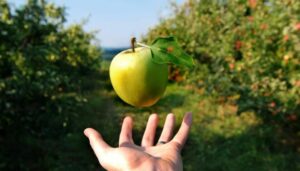
Quran Chapter 36, Verse 40 states: “It is not allowable for the sun to reach the moon, nor does the night overtake the day, but each, in an orbit, is swimming.” This verse highlights the precise and orderly nature of celestial bodies moving in their orbits, a concept that indirectly reflects the role of gravity. Gravity, an essential force in the universe, keeps everything grounded and maintains the orbits of planets and celestial bodies. Here, we explore the significance of gravity, its understanding through Quranic reflection, and insights from science and technology.
The Significance of Gravity in Creation
Gravity as a Fundamental Force:
Gravity is one of the four fundamental forces of nature. It attracts objects with mass toward one another, giving weight to physical objects and keeping planets in orbit around stars.
Role in Celestial Orbits:
The verse mentions the sun and the moon in their distinct orbits. Gravity is the force that maintains these orbits, preventing celestial bodies from colliding and ensuring the stability of the solar system.
Maintaining Planetary Motion:
Gravity keeps planets, including Earth, in their respective orbits around the sun, allowing for predictable patterns and cycles such as seasons and day-night cycles.
Grounding Objects:
Gravity keeps everything grounded on Earth, from humans to buildings, preventing objects from floating off into space. This grounding is essential for life as we know it.
Reflection on Quran Chapter 36, Verse 40
“It is not allowable for the sun to reach the moon, nor does the night overtake the day”:
This part of the verse emphasizes the orderly and distinct paths of celestial bodies, which can be attributed to the gravitational forces that govern their motions.
“But each, in an orbit, is swimming”:
The imagery of celestial bodies swimming in their orbits highlights the dynamic yet harmonious nature of the universe, maintained by gravity.
Understanding the Divine Wisdom
Order in the Universe:
The precise order and balance in the universe reflect Allah’s wisdom in creating and maintaining natural laws such as gravity, ensuring the stability and predictability of celestial motions.
Interdependence of Forces:
Gravity works in conjunction with other forces, such as electromagnetic and nuclear forces, to sustain the structure and function of the universe.
Insights from Science and Technology

Isaac Newton’s Law of Universal Gravitation:
Newton’s law describes gravity as a force that attracts two bodies with mass. This scientific principle supports the Quranic depiction of celestial order and motion.
Albert Einstein’s Theory of General Relativity:
Einstein’s theory explains gravity as the curvature of spacetime caused by mass. This advanced understanding further illustrates the intricate design of the universe.
Gravitational Waves:
Predicted by Einstein and confirmed by modern technology, gravitational waves are ripples in spacetime caused by violent cosmic events. Their discovery highlights the dynamic and interconnected nature of the universe.
Space Exploration:
Understanding gravity is crucial for space exploration, influencing spacecraft trajectories, satellite orbits, and planetary landings.
Gravity’s Role in Life on Earth:
Gravity affects everything from blood circulation in the human body to the flow of rivers, demonstrating its fundamental role in sustaining life and natural processes.
Technological Applications:
Technologies such as GPS rely on precise calculations of gravitational effects to provide accurate positioning and navigation.
Geophysical Phenomena:
Gravity influences geophysical phenomena such as tides, caused by the gravitational pull of the moon and the sun on Earth’s oceans.
Architectural Design:
Engineering and architecture depend on understanding gravity to construct stable buildings and infrastructure that can withstand gravitational forces.
Planetary Formation:
Gravity plays a crucial role in the formation of planets and stars, driving the accumulation of matter in the early stages of the universe.
Stability of the Atmosphere:
Gravity keeps Earth’s atmosphere in place, allowing for the presence of breathable air and protection from harmful space radiation.
Conclusion
Quran Chapter 36, Verse 40 emphasizes the precise and orderly nature of celestial bodies, indirectly reflecting the role of gravity in maintaining their orbits. Gravity, a fundamental force, keeps everything grounded and ensures the stability of planetary motions and life on Earth. Understanding gravity through the lens of the Quran and modern science highlights Allah’s wisdom and the intricate design of the universe. Reflecting on these insights fosters a deeper appreciation of Allah’s creation and inspires gratitude for the natural laws that sustain our existence.
Mountains - Stabilize the Earth
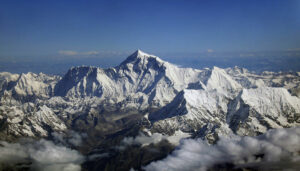
Quran Chapter 21, Verse 31 states: “And We placed within the earth firmly set mountains, lest it should shift with them, and We made therein [mountain] passes [as] roads that they might be guided.” This verse highlights the role of mountains in providing stability to the Earth, preventing it from shifting. Here, we explore the significance of mountains in stabilizing the Earth, understanding their role through both Quranic reflection and insights from science and technology.
The Significance of Mountains in Creation
Mountains as Stabilizers:
The Quran describes mountains as being firmly set to prevent the Earth from shifting, implying their role in maintaining geological stability.
Mountain Passes as Roads:
The verse also mentions mountain passes, highlighting their role in providing navigable routes and guiding human movement.
Reflection on Quran Chapter 21, Verse 31
“And We placed within the earth firmly set mountains”:
This part of the verse underscores the intentional and purposeful creation of mountains by Allah, emphasizing their stability-providing function.
“Lest it should shift with them”:
This phrase suggests that mountains play a critical role in preventing the Earth from experiencing significant geological instability.
“And We made therein [mountain] passes [as] roads”:
This highlights the additional utility of mountains in facilitating transportation and navigation, reflecting their multifaceted benefits.
Understanding the Divine Wisdom

Geological Stability:
Mountains contribute to the stability of the Earth’s crust by acting as anchors that counteract the movements of tectonic plates.
Ecosystem Support:
Mountains support diverse ecosystems, providing habitats for various species and contributing to biodiversity.
Insights from Science and Technology
Plate Tectonics and Mountain Formation:
Mountains are formed through tectonic processes, such as the collision and subduction of tectonic plates. These processes are crucial for understanding the dynamic nature of the Earth’s crust.
Role in Reducing Earthquakes:
The presence of mountains can influence seismic activity by redistributing tectonic stresses, potentially reducing the frequency and intensity of earthquakes in certain regions.
Soil Stability and Erosion Control:
Mountains help stabilize soil and reduce erosion, preventing landslides and maintaining the integrity of landscapes.
Water Cycle Regulation:
Mountains play a vital role in the water cycle by capturing moisture from the atmosphere, leading to the formation of rivers and lakes that provide fresh water to ecosystems and human populations.
Climate Regulation:
Mountains influence local and regional climates by affecting weather patterns and temperature gradients, contributing to climatic stability.
Mineral Resources:
Mountains are rich sources of minerals and natural resources, essential for various industries and human use.
Scientific Research:
Studying mountains and their geological formations provides valuable insights into the history of the Earth and the processes that shape it.
Technological Advances:
Technologies such as remote sensing and geographic information systems (GIS) are used to study mountains, monitor geological activity, and plan sustainable development.
Biodiversity Hotspots:
Mountains are home to unique flora and fauna, many of which are adapted to high-altitude environments, making them important areas for biodiversity conservation.
Cultural Significance:
Mountains hold cultural and spiritual significance for many communities, often being regarded as sacred or revered landscapes.
Tourism and Recreation:
Mountains attract tourists and outdoor enthusiasts, contributing to local economies and promoting physical well-being through recreational activities.
Natural Barriers:
Mountains serve as natural barriers that influence human settlement patterns, political boundaries, and the movement of weather systems.
Energy Resources:
Mountains are potential sources of renewable energy, such as hydroelectric power, harnessed from mountain rivers and streams.
Conclusion
Quran Chapter 21, Verse 31 highlights the role of mountains in stabilizing the Earth, preventing it from shifting. This verse underscores the intentional design and multifaceted benefits of mountains, from geological stability to ecosystem support and human utility. Insights from science and technology further elucidate the importance of mountains in maintaining the Earth’s structural integrity, regulating climate, and supporting biodiversity. Reflecting on these insights fosters a deeper appreciation of Allah’s wisdom in creating such essential and magnificent features, encouraging gratitude and respect for the natural world. more info quranexplains.com
Rivers - Source of fresh water

Quran Chapter 14, Verse 32 states: “It is Allah who created the heavens and the earth and sent down rain from the sky and produced thereby some fruits as provision for you and subjected for you the ships to sail through the sea by His command and subjected for you the rivers.” This verse highlights Allah’s power in creating and sustaining systems essential for human survival, including rivers as a vital source of fresh water. Here, we explore the significance of rivers for survival, understanding their role through both Quranic reflection and insights from science and technology.
The Significance of Rivers in Creation
Source of Fresh Water:
Rivers are a primary source of fresh water for drinking, agriculture, and sanitation, making them essential for human survival.
Supporting Ecosystems:
Rivers provide habitats for a wide range of aquatic and terrestrial species, contributing to biodiversity and ecological balance.
Reflection on Quran Chapter 14, Verse 32
“It is Allah who created the heavens and the earth”:
This part of the verse emphasizes Allah’s ultimate authority and power in creating the entire universe, including the natural systems that sustain life.
“Sent down rain from the sky and produced thereby some fruits as provision for you”:
This phrase highlights the water cycle, where rain nourishes the land, leading to the growth of fruits and vegetation, crucial for human nourishment.
“And subjected for you the ships to sail through the sea by His command”:
This highlights the utility of water bodies for transportation and trade, facilitated by Allah’s command.
“And subjected for you the rivers”:
This underscores the divine provision of rivers, essential for various aspects of human life and civilization.
Understanding the Divine Wisdom

Hydrological Cycle:
Rivers are an integral part of the hydrological cycle, which involves the continuous movement of water on, above, and below the surface of the Earth.
Agricultural Irrigation:
Rivers provide water for irrigation, essential for growing crops and supporting food production, which is crucial for human sustenance.
Insights from Science and Technology
Water Supply:
Rivers are critical sources of freshwater supply for communities and cities, providing water for drinking, cooking, and cleaning.
Transportation and Trade:
Historically and in modern times, rivers have been used for transportation and trade, enabling the movement of goods and people.
Energy Production:
Rivers are harnessed for hydropower, generating electricity through the flow of water, contributing to renewable energy resources.
Biodiversity and Ecosystems:
Rivers support diverse ecosystems, providing habitats for fish, birds, and other wildlife, and playing a crucial role in maintaining biodiversity.
Cultural and Spiritual Significance:
Many cultures and religions consider rivers to be sacred and central to their spiritual practices and rituals.
Recreational Activities:
Rivers provide opportunities for recreational activities such as fishing, boating, and swimming, contributing to human well-being and leisure.
Economic Importance:
Rivers contribute to economies through fishing, tourism, and agriculture, providing livelihoods for millions of people.
Natural Barriers and Borders:
Rivers often serve as natural boundaries and borders, influencing geopolitical landscapes and territorial divisions.
Nutrient Transport:
Rivers transport nutrients from land to sea, supporting marine life and contributing to the productivity of coastal ecosystems.
Flood Control and Management:
Rivers play a role in flood control and management, with natural floodplains absorbing excess water and mitigating the impact of floods.
Climate Regulation:
Rivers influence local and regional climates by regulating temperature and humidity levels, contributing to climate stability.
Scientific Research:
Studying rivers and their ecosystems provides valuable insights into environmental health, climate change, and ecological dynamics.
Sustainability and Conservation:
Ensuring the sustainability and conservation of rivers is crucial for maintaining their ecological functions and supporting future generations.
Conclusion
Quran Chapter 14, Verse 32 highlights the power of Allah in creating and sustaining essential systems, including rivers as a vital source of fresh water. This verse underscores the divine provision of rivers, which are crucial for drinking, agriculture, sanitation, transportation, energy production, and ecological balance. Insights from science and technology further elucidate the multifaceted importance of rivers, emphasizing their role in supporting human life and civilization. Reflecting on these insights fosters a deeper appreciation of Allah’s wisdom and encourages responsible stewardship of this invaluable natural resource. For more info Quranexplains.com
Oceans - Regulate climate and support marine life
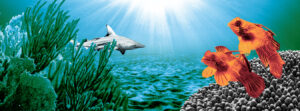
Quran Chapter 6, Verse 59 states: “And with Him are the keys of the unseen; none knows them except Him. And He knows what is on the land and in the sea. Not a leaf falls but that He knows it. And no grain is there within the darknesses of the earth and no moist or dry [thing] but that it is [written] in a clear record.” This verse highlights Allah’s comprehensive knowledge and control over all aspects of creation, including the oceans. Here, we explore the significance of oceans in regulating climate and supporting marine life, understanding their role through both Quranic reflection and insights from science and technology.
The Significance of Oceans in Creation
Regulating Climate:
Oceans play a crucial role in regulating the Earth’s climate by absorbing heat from the sun, storing it, and redistributing it through currents. This helps to moderate global temperatures.
Supporting Marine Life:
Oceans provide habitats for a vast diversity of marine organisms, from microscopic plankton to large whales, forming complex and dynamic ecosystems.
Reflection on Quran Chapter 6, Verse 59
“And with Him are the keys of the unseen; none knows them except Him.”:
This emphasizes Allah’s omniscience and control over all hidden aspects of creation, including the depths of the oceans which are largely unexplored by humans.
“And He knows what is on the land and in the sea.”:
This highlights Allah’s awareness and control over all terrestrial and marine environments, acknowledging the importance of both land and sea in His creation.
“Not a leaf falls but that He knows it.”:
This metaphor underscores Allah’s attention to the smallest details of His creation, including the intricate processes within marine ecosystems.
“And no grain is there within the darknesses of the earth and no moist or dry [thing] but that it is [written] in a clear record.”:
This suggests that every aspect of creation, including the oceans and their contents, is known and maintained by Allah’s decree.
Understanding the Divine Wisdom

Oceans as Climate Regulators:
By absorbing and distributing heat, oceans help to regulate the Earth’s climate, preventing extreme temperature fluctuations and supporting stable weather patterns.
Biodiversity in Oceans:
Oceans are home to diverse ecosystems that provide food, oxygen, and various resources essential for life on Earth.
Insights from Science and Technology
Heat Absorption and Distribution:
Oceans absorb solar energy, distributing heat through currents like the Gulf Stream, which warms Europe, and the Antarctic Circumpolar Current, which regulates the Southern Hemisphere’s climate.
Carbon Dioxide Absorption:
Oceans absorb a significant amount of carbon dioxide from the atmosphere, helping to mitigate the effects of climate change by acting as a carbon sink.
Weather and Climate Influence:
Ocean currents influence global weather patterns, including phenomena such as El Niño and La Niña, which affect precipitation and temperature across the globe.
Marine Ecosystems and Food Webs:
Marine ecosystems, including coral reefs, mangroves, and deep-sea environments, support complex food webs that sustain a wide variety of marine life.
Oxygen Production:
Phytoplankton in the oceans produce a significant portion of the Earth’s oxygen through photosynthesis, contributing to the breathable atmosphere.
Nutrient Cycling:
Oceans play a vital role in nutrient cycling, distributing essential elements like nitrogen and phosphorus that support marine and terrestrial life.
Economic Importance:
Oceans support global economies through fisheries, tourism, and marine transportation, providing livelihoods for millions of people.
Scientific Research:
The study of oceans, through disciplines such as oceanography and marine biology, provides valuable insights into climate regulation, ecosystem dynamics, and biodiversity.
Technological Advances:
Technologies such as satellite remote sensing, underwater drones, and deep-sea submersibles enable detailed exploration and monitoring of oceanic environments.
Marine Conservation:
Efforts to protect and conserve marine ecosystems are crucial for maintaining the health of the oceans, ensuring the sustainability of their resources for future generations.
Climate Change Mitigation:
Protecting and restoring marine ecosystems, such as mangroves and seagrasses, enhances their ability to sequester carbon and mitigate the impacts of climate change.
International Cooperation:
Addressing ocean-related challenges requires international cooperation and policy frameworks, such as the United Nations Convention on the Law of the Sea (UNCLOS).
Conclusion
Quran Chapter 6, Verse 59 highlights Allah’s comprehensive knowledge and control over all aspects of creation, including the oceans. This verse underscores the significance of oceans in regulating climate and supporting marine life, illustrating Allah’s wisdom in creating such essential and complex systems. Insights from science and technology further elucidate the vital roles of oceans in absorbing heat, regulating weather patterns, supporting biodiversity, and providing resources essential for human survival. Reflecting on these insights fosters a deeper appreciation of Allah’s creation and encourages responsible stewardship of the oceans to sustain their health and benefits for future generations. for more info quranexplains.com
Rain - Nourishes plants and replenishes water sources

Quran Chapter 78, Verses 14-16 state: “And We sent down from the rain clouds pouring water, that We may bring forth thereby grain and vegetation, and gardens of entwined growth.” These verses highlight the importance of rain as a divine provision that nourishes plants and replenishes water sources. Here, we explore the significance of rain in sustaining life, understanding its role through both Quranic reflection and insights from science and technology.
The Significance of Rain in Creation
Nourishing Plants:
Rain provides the essential water needed for plants to grow, enabling photosynthesis and the production of food.
Replenishing Water Sources:
Rainfall replenishes rivers, lakes, and aquifers, ensuring a continuous supply of fresh water for various uses.
Reflection on Quran Chapter 78, Verses 14-16
“And We sent down from the rain clouds pouring water”:
This part of the verse emphasizes the abundant and generous provision of water through rain, which is crucial for sustaining life on Earth.
“That We may bring forth thereby grain and vegetation”:
This highlights the direct connection between rainfall and the growth of crops and vegetation, essential for human and animal sustenance.
“And gardens of entwined growth”:
This phrase reflects the diversity and beauty of plant life that flourishes due to the nourishment provided by rain.

Understanding the Divine Wisdom
Provision of Sustenance:
Rain is a divine provision that ensures the availability of food and water, demonstrating Allah’s mercy and care for His creation.
Ecological Balance:
Rainfall maintains ecological balance by supporting plant growth, which in turn supports a wide range of ecosystems and biodiversity.
Insights from Science and Technology
The Water Cycle:
Rain is a crucial component of the water cycle, where water evaporates from the surface of the Earth, forms clouds, and falls back as precipitation, replenishing water sources.
Photosynthesis:
Rain provides water that plants use in photosynthesis, the process by which they convert light energy into chemical energy, producing oxygen and food.
Soil Moisture:
Rainfall increases soil moisture, which is vital for seed germination, root development, and overall plant health.
Aquifer Recharge:
Rainwater infiltrates the ground, replenishing aquifers and underground water sources that provide fresh water for drinking and irrigation.
River and Lake Levels:
Rainfall directly impacts the levels of rivers and lakes, ensuring a continuous supply of fresh water for ecosystems and human use.
Climate Regulation:
Rainfall patterns influence regional climates, affecting temperature and humidity levels, which in turn impact agricultural productivity and biodiversity.
Agricultural Productivity:
Consistent and adequate rainfall is essential for successful crop cultivation, directly impacting food security and agricultural economies.
Hydroelectric Power:
Rainfall contributes to the flow of rivers, which can be harnessed to generate hydroelectric power, providing a renewable energy source.
Erosion Control:
Rain helps to prevent soil erosion by promoting vegetation growth, which stabilizes the soil with plant roots.
Purification Process:
Rainwater undergoes a natural purification process as it filters through the atmosphere and soil, providing clean and fresh water.
Flood Management:
Understanding rainfall patterns and using technologies like dams and reservoirs helps manage floods and mitigate their impacts on communities.
Weather Forecasting:
Advances in meteorology and satellite technology enable accurate prediction of rainfall, helping farmers and communities prepare for and respond to weather events.
Ecological Research:
Studying rainfall and its effects on ecosystems provides insights into environmental health and helps develop strategies for conservation and sustainability.
Conclusion
Quran Chapter 78, Verses 14-16 highlights the importance of rain as a divine provision that nourishes plants and replenishes water sources. This Quranic reflection underscores the significance of rain in sustaining life, ensuring food security, and maintaining ecological balance. Insights from science and technology further elucidate the critical roles of rain in the water cycle, photosynthesis, soil moisture, aquifer recharge, and climate regulation. Reflecting on these insights fosters a deeper appreciation of Allah’s wisdom in creating such an essential and beneficial natural process, encouraging gratitude and responsible stewardship of water resources.
Snow - Affects climate and water cycles

Quran Chapter 24, Verse 43 states: “Do you not see that Allah drives clouds? Then He brings them together, then He makes them into a mass, and you see the rain emerge from within it. And He sends down from the sky, mountains [of clouds] within which is hail, and He strikes with it whom He wills and averts it from whom He wills. The flash of its lightning almost takes away the eyesight.” This verse highlights the power of Allah in controlling weather phenomena, including the formation of clouds and the precipitation of hail and snow. Here, we explore the significance of snow in affecting climate and water cycles, understanding its role through both Quranic reflection and insights from science and technology.
The Significance of Snow in Creation
Climate Regulation:
Snow plays a crucial role in regulating the Earth’s climate by reflecting solar radiation, influencing temperature, and affecting weather patterns.
Water Storage:
Snow acts as a natural reservoir, storing water in the form of snowpack and glaciers, which gradually melts and contributes to rivers and groundwater.
Reflection on Quran Chapter 24, Verse 43
“Do you not see that Allah drives clouds?”:
This part of the verse emphasizes Allah’s power in guiding the formation and movement of clouds, leading to various forms of precipitation, including snow.
“Then He brings them together, then He makes them into a mass”:
This highlights the process of cloud formation and aggregation, which can result in the accumulation of snow-laden clouds.
“And you see the rain emerge from within it. And He sends down from the sky, mountains [of clouds] within which is hail”:
This phrase illustrates the variety of precipitation forms, including hail and snow, that Allah sends down from the sky, each serving different ecological purposes.
“And He strikes with it whom He wills and averts it from whom He wills”:
This underscores the selective nature of precipitation, influenced by divine wisdom and serving the needs of various regions.
“The flash of its lightning almost takes away the eyesight”:
This metaphor emphasizes the power and intensity of weather phenomena, which are under Allah’s control.
Understanding the Divine Wisdom
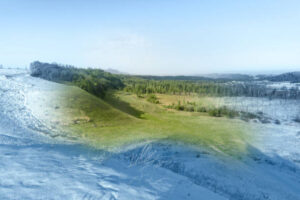
Seasonal Snowfall:
Snowfall varies seasonally and geographically, providing crucial water resources and influencing local climates.
Snowpack and Glaciers:
Snow accumulates in the form of snowpack and glaciers, acting as long-term water storage that releases water during warmer months, sustaining rivers and ecosystems.
Insights from Science and Technology
Albedo Effect:
Snow has a high albedo, meaning it reflects a significant portion of solar radiation back into space, helping to cool the Earth’s surface and regulate temperature.
Thermal Insulation:
Snow acts as an insulating layer, protecting the ground and underlying vegetation from extreme cold, preserving soil moisture and plant roots.
Hydrological Cycle:
Snow is a critical component of the hydrological cycle, contributing to the seasonal replenishment of rivers, lakes, and groundwater as it melts.
Climate Feedback Loops:
The presence of snow influences climate feedback loops, where changes in snow cover can amplify or mitigate climate change effects.
Water Resource Management:
Understanding snowmelt patterns is essential for managing water resources, especially in regions dependent on snow-fed rivers for agriculture, drinking water, and hydroelectric power.
Snow and Weather Patterns:
Snow influences atmospheric circulation and weather patterns, affecting precipitation distribution and storm tracks.
Snow as an Indicator of Climate Change:
Changes in snowfall and snow cover are important indicators of climate change, providing insights into global warming and its impact on polar and mountainous regions.
Technological Advances:
Technologies such as satellite remote sensing, snow gauges, and climate models help monitor snow cover, predict snowmelt, and assess its impact on water resources.
Ecological Impact:
Snow provides habitat for various species, supports winter ecosystems, and influences the distribution and behavior of wildlife.
Agricultural Benefits:
Snow contributes to soil moisture and nutrient replenishment, benefiting agricultural activities in regions that rely on snowmelt for irrigation.
Disaster Mitigation:
Understanding and predicting snow-related phenomena, such as avalanches and floods, is crucial for disaster mitigation and protecting communities.
Conclusion
Quran Chapter 24, Verse 43 highlights the power of Allah in controlling weather phenomena, including the formation and precipitation of snow. This Quranic reflection underscores the significance of snow in regulating climate and supporting water cycles, illustrating Allah’s wisdom in creating such essential and complex systems. Insights from science and technology further elucidate the critical roles of snow in the albedo effect, thermal insulation, hydrological cycle, and climate feedback loops. Reflecting on these insights fosters a deeper appreciation of Allah’s creation and encourages responsible stewardship of natural resources to sustain their benefits for future generations. more info visit quranexplains.com
Wind - Facilitates pollination and weather patterns

Quran Chapter 42, Verse 33 states: “If He wills, He can still the wind, and they would remain motionless on its back. Indeed in that are signs for everyone patient and grateful.” This verse emphasizes Allah’s control over the wind, highlighting its importance and the signs of divine wisdom within it. Here, we explore the significance of wind in facilitating pollination and shaping weather patterns, understanding its role through both Quranic reflection and insights from scientific research and technology.
The Significance of Wind in Creation:
Facilitating Pollination:
Wind plays a crucial role in the pollination of many plant species, including crops and wildflowers, which is essential for plant reproduction and biodiversity.
Shaping Weather Patterns:
Wind influences weather patterns by distributing heat and moisture across the globe, affecting precipitation, temperature, and climate.
Reflection on Quran Chapter 42, Verse 33:
“If He wills, He can still the wind, and they would remain motionless on its back”:
This part of the verse emphasizes Allah’s absolute control over the wind, illustrating its importance in maintaining the dynamic balance of nature.
“Indeed in that are signs for everyone patient and grateful”:
This phrase encourages believers to reflect on the wisdom and mercy of Allah in providing wind, which is essential for sustaining life and the environment.
Understanding the Divine Wisdom:

Wind as a Sign of Allah’s Power:
The Quranic verse invites reflection on the wind as a manifestation of Allah’s power and wisdom in creating and sustaining the natural world.
Ecological Balance:
Wind is a vital component of ecological balance, supporting processes such as pollination and the dispersal of seeds, which ensure the continuation of plant species.
Insights from Scientific Research and Technology:
Pollination:
Wind-pollinated plants, such as grasses, grains, and some trees, rely on wind to transport pollen from one flower to another, facilitating fertilization and seed production.
Seed Dispersal:
Wind aids in the dispersal of seeds, enabling plants to colonize new areas, promoting genetic diversity and ecosystem resilience.
Weather Patterns and Climate:
Wind is a key factor in shaping weather patterns and climate by redistributing heat and moisture around the planet. Wind-driven ocean currents also play a significant role in regulating global climate.
Wind-Driven Circulation:
The movement of air masses due to wind influences the distribution of temperature and precipitation, affecting weather systems and seasonal changes.
Cyclones and Anticyclones:
Wind patterns are responsible for the formation of cyclones and anticyclones, which are large-scale air masses that drive weather systems and influence regional climates.
Technological Advances:
Technologies such as anemometers, weather satellites, and climate models help monitor and analyze wind patterns, providing valuable data for weather forecasting and climate research.
Wind Energy:
Wind turbines harness the kinetic energy of wind to generate electricity, providing a renewable and sustainable source of energy that reduces dependence on fossil fuels.
Meteorological Research:
Advances in meteorology and atmospheric science have enhanced our understanding of wind dynamics, improving weather prediction and climate modeling.
Impact on Agriculture:
Wind affects agricultural practices by influencing microclimates, aiding in the pollination of crops, and sometimes causing damage through wind erosion or storms.
Environmental Monitoring:
Wind plays a role in the dispersion of pollutants and particulate matter, affecting air quality and environmental health. Monitoring wind patterns helps manage air pollution and mitigate its impacts.
Aerosol Transport:
Wind carries aerosols and other airborne particles across long distances, impacting climate, weather patterns, and even human health.
Desertification and Erosion:
Wind contributes to the processes of desertification and soil erosion, highlighting the need for sustainable land management practices to protect vulnerable ecosystems.
Navigation and Transportation:
Historically, wind has been essential for navigation and transportation, with sailing ships relying on wind currents to traverse oceans and seas.
Disaster Preparedness:
Understanding wind patterns is crucial for disaster preparedness and response, particularly in regions prone to hurricanes, tornadoes, and other wind-related natural disasters.
Conclusion:
Quran Chapter 42, Verse 33 highlights the power of Allah in controlling the wind and emphasizes its significance in maintaining the natural balance. This Quranic reflection underscores the importance of wind in facilitating pollination, shaping weather patterns, and supporting ecological processes. Insights from scientific research and technological advancements further elucidate the critical roles of wind in pollination, seed dispersal, climate regulation, and renewable energy generation. Reflecting on these insights fosters a deeper appreciation of Allah’s creation and encourages the responsible stewardship of natural resources to sustain their benefits for future generations.For more info visit QuranExplains.com
Clouds - Contribute to weather and precipitation

Quran Chapter 24, Verse 43 states: “Do you not see that Allah drives clouds? Then He brings them together, then He makes them into a mass, and you see the rain emerge from within it. And He sends down from the sky, mountains [of clouds] within which is hail, and He strikes with it whom He wills and averts it from whom He wills. The flash of its lightning almost takes away the eyesight.” This verse highlights the divine control over the formation and behavior of clouds, emphasizing their critical role in weather and precipitation. Here, we explore the significance of clouds in contributing to weather patterns and precipitation, understanding their role through both Quranic reflection and insights from scientific research.
The Significance of Clouds in Creation:
Weather Regulation:
Clouds play a crucial role in regulating weather patterns by influencing temperature, humidity, and atmospheric pressure.
Precipitation:
Clouds are essential for the formation of precipitation, including rain, snow, sleet, and hail, which are vital for replenishing water sources and sustaining life on Earth.
Reflection on Quran Chapter 24, Verse 43:
“Do you not see that Allah drives clouds?”:
This part of the verse emphasizes Allah’s power in guiding the formation and movement of clouds, which are central to weather systems.
“Then He brings them together, then He makes them into a mass”:
This highlights the process of cloud aggregation, where small cloud formations combine to create larger cloud masses capable of producing precipitation.
“And you see the rain emerge from within it”:
This phrase illustrates the outcome of cloud formation, where rain, a crucial source of fresh water, emerges from these masses.
“And He sends down from the sky, mountains [of clouds] within which is hail”:
This part reflects the variety of precipitation forms, including hail, that are contained within clouds, showcasing their complexity and significance.
“And He strikes with it whom He wills and averts it from whom He wills”:
This underscores the selective nature of precipitation, influenced by divine wisdom, serving the needs of different regions.
“The flash of its lightning almost takes away the eyesight”:
This metaphor emphasizes the power and intensity of weather phenomena associated with clouds, such as lightning.
Understanding the Divine Wisdom:

Provision of Water:
Clouds are a divine means of providing water to the Earth, essential for drinking, agriculture, and maintaining ecosystems.
Ecological Balance:
The distribution and amount of precipitation controlled by clouds are critical for maintaining ecological balance and supporting biodiversity.
Insights from Scientific Research:
Cloud Formation:
Clouds form when warm, moist air rises and cools, causing water vapor to condense into tiny water droplets or ice crystals. These droplets cluster together to form clouds.
Types of Clouds:
Clouds are categorized into various types based on their appearance and altitude, such as cumulus, stratus, cirrus, and nimbus, each playing different roles in weather phenomena.
Precipitation Process:
Precipitation occurs when cloud droplets coalesce into larger droplets that become heavy enough to fall to the ground as rain, snow, sleet, or hail.
Clouds and Climate Regulation:
Clouds influence the Earth’s energy balance by reflecting sunlight (albedo effect) and trapping heat, affecting temperature and climate patterns.
Weather Prediction:
Advances in meteorology and technology, such as satellites and radar, enable accurate monitoring and prediction of cloud behavior and associated weather events.
Role in Water Cycle:
Clouds are integral to the water cycle, facilitating the continuous movement of water between the Earth’s surface and the atmosphere through evaporation, condensation, and precipitation.
Impact on Agriculture:
Cloud cover and precipitation directly impact agricultural productivity by providing essential water for crops and affecting growing conditions.
Global Circulation:
Clouds play a role in global atmospheric circulation by transporting heat and moisture across different regions, influencing weather systems and climate zones.
Storm Formation:
Severe weather events, such as thunderstorms, hurricanes, and cyclones, are associated with large cloud systems that produce intense precipitation and strong winds.
Ecological and Environmental Effects:
Cloud patterns affect ecosystems by determining precipitation distribution, which influences plant growth, water availability, and habitat conditions.
Technological Advances in Cloud Study:
Satellite Imaging:
Satellites provide detailed images of cloud cover and movement, helping scientists study cloud dynamics and predict weather changes.
Weather Radars:
Weather radars detect precipitation within clouds, providing data on the intensity and movement of storms and helping forecast severe weather.
Climate Models:
Climate models simulate cloud formation and behavior, helping researchers understand their impact on global climate and predict future climate scenarios.
Drones and Aircraft:
Drones and research aircraft equipped with sensors collect data on cloud properties, such as temperature, humidity, and droplet size, enhancing our understanding of cloud processes.
Ground-Based Observations:
Ground-based instruments, such as weather stations and ceilometers, measure cloud base height, coverage, and thickness, contributing to local weather monitoring.
Conclusion:
Quran Chapter 24, Verse 43 highlights the divine control over the formation and behavior of clouds, emphasizing their significance in weather and precipitation. This Quranic reflection underscores the importance of clouds in regulating weather patterns, providing water, and maintaining ecological balance. Insights from scientific research and technological advancements further elucidate the critical roles of clouds in cloud formation, precipitation processes, climate regulation, and weather prediction. Reflecting on these insights fosters a deeper appreciation of Allah’s creation and encourages responsible stewardship of natural resources to sustain their benefits for future generations. More info QuranExplains.com
Seasons - Cycle of growth and renewal

The Quran provides profound insights into the natural world, including the cycle of seasons, which plays a crucial role in growth and renewal. The changing seasons are a testament to Allah’s wisdom and power in maintaining the balance and harmony of creation. This article explores the significance of seasons as described in the Quran, highlighting their role in fostering growth and renewal through specific examples and reflections.
Quranic References to Seasons:
Surah Al-Baqarah (2:164):
“Indeed, in the creation of the heavens and the earth, and the alternation of the night and the day, and the [great] ships which sail through the sea with that which benefits people, and what Allah has sent down from the heavens of rain, giving life thereby to the earth after its lifelessness and dispersing therein every [kind of] moving creature, and [His] directing of the winds and the clouds controlled between the heaven and the earth are signs for a people who use reason.”
Surah Al-Nahl (16:65):
“And Allah sends down from the sky rain and gives life thereby to the earth after its lifelessness. Indeed in that is a sign for a people who listen.”
Surah Ar-Rum (30:48-50):
“It is Allah who sends the winds, and they stir the clouds and spread them in the sky however He wills, and He makes them fragments so you see the rain emerge from within them. And when He causes it to fall upon whom He wills of His servants, immediately they rejoice. Although they were, before it was sent down upon them – before that, in despair. So observe the effects of the mercy of Allah – how He gives life to the earth after its lifelessness. Indeed, that [same One] will give life to the dead, and He is over all things competent.”
Significance of Seasons in Growth and Renewal:
Spring: The Season of Rebirth:
Spring symbolizes renewal and rebirth. Plants and trees that were dormant during winter begin to sprout and bloom. This rejuvenation is a manifestation of Allah’s mercy and the intricate design of nature.
Summer: The Season of Growth:
Summer is characterized by warmth and abundance. It is a period of growth and development for crops and vegetation. The longer days and increased sunlight facilitate photosynthesis, enabling plants to produce food and sustain life.
Autumn: The Season of Harvest:
Autumn, or fall, is the time of harvest. Crops mature and are gathered for sustenance. This season represents the fruition of the hard work put in during the earlier seasons and is a time of thanksgiving and preparation for the coming winter.
Winter: The Season of Rest and Preservation:
Winter is a period of rest and preservation. Many plants and animals enter a state of dormancy, conserving energy for the upcoming spring. It is a time for the earth to rejuvenate and prepare for the cycle to begin anew.
Reflections on Quranic Verses and the Cycle of Seasons:
Divine Wisdom in the Alternation of Seasons:
The alternation of seasons is a reflection of Allah’s wisdom in creating a balanced and sustainable environment. Each season plays a distinct role in the life cycle of plants and animals, ensuring their survival and propagation.
Signs for Those Who Reflect:
The Quran encourages believers to reflect on the signs in nature, including the changing seasons. These natural phenomena serve as reminders of Allah’s power and mercy, prompting gratitude and mindfulness of His creation.
Scientific Insights into the Cycle of Seasons:

Earth’s Tilt and Orbit:
The cycle of seasons is caused by the tilt of the Earth’s axis and its orbit around the sun. This tilt causes different parts of the Earth to receive varying amounts of sunlight throughout the year, leading to seasonal changes.
Photosynthesis and Plant Growth:
During spring and summer, increased sunlight and warmer temperatures enhance photosynthesis, the process by which plants convert sunlight into energy. This leads to rapid growth and the production of food.
Seasonal Adaptations in Animals:
Many animals have evolved to adapt to seasonal changes. For example, some species migrate to warmer regions during winter, while others hibernate to conserve energy.
Agricultural Cycles:
Farmers rely on the predictable cycle of seasons to plan their planting and harvesting schedules. Each season offers specific conditions that are conducive to different stages of crop growth.
Conclusion:
The cycle of seasons is a magnificent example of Allah’s wisdom and power, as described in the Quran. Each season plays a vital role in the growth and renewal of life on Earth, ensuring the sustainability and balance of ecosystems. By reflecting on the Quranic verses and understanding the scientific principles behind the changing seasons, believers can gain a deeper appreciation of Allah’s creation and the intricate design of the natural world. This awareness fosters gratitude, mindfulness, and responsible stewardship of the environment, aligning with the divine guidance provided in the Quran. More info QuranExplains.com
Soil - Basis for plant growth

Soil is fundamental for plant growth and the sustenance of life on Earth. The Quran provides insights into the significance of soil, highlighting its importance in creation and sustenance. This article explores the Quranic perspective on soil and its role in plant growth, supported by scientific evidence.
Quranic References to Soil:
Surah Al-Baqarah (2:164):
“Indeed, in the creation of the heavens and the earth, and the alternation of the night and the day, and the [great] ships which sail through the sea with that which benefits people, and what Allah has sent down from the heavens of rain, giving life thereby to the earth after its lifelessness and dispersing therein every [kind of] moving creature, and [His] directing of the winds and the clouds controlled between the heaven and the earth are signs for a people who use reason.”
Surah An-Naba (78:6):
“Have We not made the earth a resting place?”
Surah Ta-Ha (20:53):
“He who has made for you from the earth a bed and made for you upon it roads that you might be guided.”
Surah Al-Hijr (15:19):
“And the earth We have spread out, and excellent is the preparer.”
The Role of Soil in Plant Growth:
Medium for Plant Roots:
Soil provides a medium for plant roots to anchor and grow, offering stability and support.
Nutrient Supply:
Soil is rich in essential nutrients and minerals required for plant growth, including nitrogen, phosphorus, potassium, and trace elements.
Water Retention:
Soil retains water, providing plants with a consistent supply of moisture necessary for photosynthesis and other metabolic processes.
Microbial Habitat:
Soil is home to a diverse community of microorganisms, including bacteria, fungi, and earthworms, which play a crucial role in decomposing organic matter and recycling nutrients.
Reflection on Quranic Verses and Soil:
“Giving life thereby to the earth after its lifelessness”:
This verse emphasizes the transformative power of rain on soil, bringing it to life and enabling plant growth.
“Made the earth a resting place”:
The Quran describes the earth as a resting place, highlighting its role in providing a stable and nurturing environment for living beings.
“Made for you from the earth a bed”:
This metaphorical description underscores the earth’s role in offering comfort and sustenance, much like a bed supports and nourishes the body.
“We have spread out the earth, and excellent is the preparer”:
This verse praises the meticulous preparation of the earth by Allah, ensuring it is conducive to life and growth.
Scientific Insights into Soil:

Soil Composition:
Soil is composed of minerals, organic matter, water, and air. The proportions of these components determine the soil’s texture, structure, and fertility.
Soil Formation:
Soil formation is a slow process influenced by factors such as parent material, climate, organisms, topography, and time. It involves the weathering of rocks and the decomposition of organic matter.
Nutrient Cycling:
Soil microorganisms decompose organic matter, releasing nutrients that are then available for plant uptake. This nutrient cycling is essential for maintaining soil fertility.
Soil Types:
Different soil types, such as sandy, clayey, and loamy soils, have distinct properties affecting water retention, aeration, and nutrient availability. Loamy soil, for example, is considered ideal for plant growth due to its balanced composition.
Soil pH:
Soil pH affects the availability of nutrients to plants. Most plants thrive in slightly acidic to neutral soil (pH 6-7).
Erosion and Conservation:
Soil erosion, caused by wind, water, and human activities, can deplete soil fertility. Soil conservation practices, such as crop rotation, cover cropping, and contour plowing, help maintain soil health and productivity.
Soil and Climate Change:
Soil plays a role in carbon sequestration, helping mitigate climate change by storing carbon that would otherwise be released into the atmosphere.
Soil Testing and Management:
Soil testing provides information on nutrient levels and pH, guiding the application of fertilizers and amendments to optimize soil health and crop yields.
Technological Advances in Soil Study:
Soil Sensors:
Soil sensors measure moisture, temperature, and nutrient levels, providing real-time data for precision agriculture and efficient water use.
Remote Sensing:
Satellite imagery and remote sensing technologies monitor soil conditions, land use, and vegetation cover, aiding in large-scale soil management and conservation efforts.
Soil Microbiology:
Advances in molecular biology techniques, such as DNA sequencing, have expanded our understanding of soil microbial communities and their roles in nutrient cycling and plant health.
Soil Health Indicators:
Indicators such as organic matter content, soil structure, and microbial activity are used to assess soil health and guide sustainable land management practices.
Innovative Farming Practices:
Techniques such as no-till farming, agroforestry, and permaculture enhance soil health by reducing erosion, improving nutrient cycling, and increasing biodiversity.
Conclusion:
The Quran provides profound insights into the significance of soil as the basis for plant growth and the sustenance of life on Earth. Quranic verses highlight the divine wisdom in creating and maintaining soil, emphasizing its crucial role in nurturing plants and supporting ecosystems. Scientific research and technological advancements further elucidate the complex processes involved in soil formation, nutrient cycling, and soil health management. Reflecting on these insights fosters a deeper appreciation of Allah’s creation and encourages responsible stewardship of soil resources to ensure their sustainability for future generations.
Quranexplains.com
Forests - Produce oxygen and absorb carbon dioxide
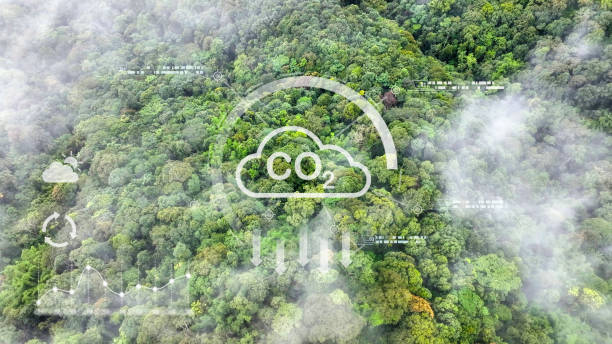
Forests are critical ecosystems that produce oxygen and absorb carbon dioxide, playing a vital role in maintaining the balance of life on Earth. The Quran, while not explicitly mentioning forests in modern terminology, provides references that emphasize the importance of trees and vegetation in Allah’s creation. This article explores the Quranic perspective on forests and their ecological significance, supported by scientific evidence.
Quranic References to Trees and Vegetation:
Surah An-Nahl (16:10-11):
“It is He who sends down rain from the sky; from it is drink and from it is foliage in which you pasture animals. He causes to grow for you thereby the crops, the olives, the date palms, the grapes, and from all the fruits. Indeed in that is a sign for a people who give thought.”
Surah Ya-Sin (36:33):
“And a sign for them is the dead earth. We have brought it to life and brought forth from it grain, and from it they eat.”
Surah Al-An’am (6:99):
“And it is He who sends down rain from the sky, and We produce thereby the growth of all things. We produce from it greenery from which We produce grains arranged in layers. And from the palm trees – of its emerging fruit are clusters hanging low. And [We produce] gardens of grapevines and olives and pomegranates, similar yet varied. Look at [each of] its fruit when it yields and [at] its ripening. Indeed in that are signs for a people who believe.”
Surah Ar-Rahman (55:6-12):
“And the stars and trees prostrate. And the sky He raised and imposed the balance that you not transgress within the balance. And establish weight in justice and do not make deficient the balance. And the earth He laid [out] for the creatures. Therein is fruit and palm trees having sheaths [of dates] and grain having husks and scented plants.”
The Role of Forests in Producing Oxygen and Absorbing Carbon Dioxide:
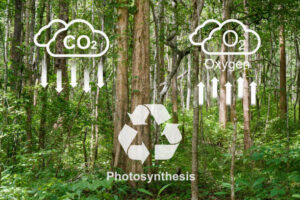
Photosynthesis:
Forests, through the process of photosynthesis, absorb carbon dioxide and release oxygen. This fundamental process occurs in the chlorophyll-containing cells of leaves.
Carbon Sequestration:
Trees and plants in forests act as carbon sinks, absorbing significant amounts of carbon dioxide from the atmosphere and storing it in their biomass and soil. This helps mitigate climate change by reducing greenhouse gas concentrations.
Oxygen Production:
Forests produce a large portion of the Earth’s oxygen. Through photosynthesis, they convert carbon dioxide and water into oxygen and glucose, releasing oxygen into the atmosphere.
Biodiversity:
Forests support a diverse range of species, contributing to ecological stability and resilience. They provide habitat, food, and shelter for countless organisms.
Reflection on Quranic Verses and Forests:
“He causes to grow for you thereby the crops…”:
This verse highlights Allah’s provision through vegetation, including trees and forests, which are essential for sustaining life.
“We have brought it to life and brought forth from it grain, and from it they eat”:
The revival of the earth through vegetation underscores the importance of plant life in supporting human and animal life.
“We produce from it greenery… gardens of grapevines and olives and pomegranates”:
This verse celebrates the diversity and bounty of vegetation, which includes forests, essential for ecological balance and human well-being.
“Therein is fruit and palm trees having sheaths [of dates] and grain having husks and scented plants”:
The detailed mention of various plants and trees signifies the intricate design and sustenance provided by forests.
Scientific Insights into Forests:
Forest Composition:
Forests are composed of trees, shrubs, herbs, and other vegetation, creating a complex and layered ecosystem.
Forest Types:
Different types of forests, such as tropical rainforests, temperate forests, and boreal forests, have unique characteristics and play distinct roles in global ecology.
Ecological Services:
Forests provide numerous ecological services, including air purification, water filtration, soil conservation, and climate regulation.
Biodiversity Hotspots:
Forests are biodiversity hotspots, housing a vast array of species. They are crucial for maintaining genetic diversity and ecosystem health.
Climate Regulation:
By absorbing carbon dioxide, forests help regulate the Earth’s climate. They also influence local weather patterns through transpiration and canopy cover.
Soil Health:
Forests improve soil health by preventing erosion, enhancing nutrient cycling, and maintaining soil structure through root systems and organic matter.
Water Cycle:
Forests play a vital role in the water cycle by absorbing rainfall, reducing runoff, and releasing water vapor through transpiration, contributing to cloud formation and precipitation.
Sustainable Resources:
Forests provide sustainable resources, such as timber, medicinal plants, and non-timber forest products, supporting livelihoods and economies.
Technological Advances in Forest Study:
Remote Sensing:
Satellite imagery and remote sensing technologies monitor forest cover, deforestation rates, and reforestation efforts on a global scale.
Forest Management:
Advances in forest management practices, such as selective logging, agroforestry, and reforestation, promote sustainable use and conservation of forest resources.
Carbon Accounting:
Techniques for measuring and verifying carbon sequestration in forests are essential for climate change mitigation strategies and carbon trading.
Biodiversity Monitoring:
Technological tools, such as camera traps, drones, and bioacoustic monitoring, help track wildlife populations and assess biodiversity in forests.
Community Involvement:
Engaging local communities in forest conservation and management through participatory approaches ensures the protection and sustainable use of forest ecosystems.
Conclusion:
Forests are vital ecosystems that produce oxygen and absorb carbon dioxide, playing a crucial role in maintaining the balance of life on Earth. The Quran highlights the significance of trees and vegetation, emphasizing their importance in sustaining life and providing ecological services. Scientific research and technological advancements further elucidate the critical functions of forests in carbon sequestration, oxygen production, climate regulation, and biodiversity conservation. Reflecting on these insights fosters a deeper appreciation of Allah’s creation and encourages responsible stewardship of forest resources to ensure their sustainability for future generations.
Quranexplains.com
Deserts - Unique ecosystems

Deserts are unique ecosystems characterized by their arid climate, extreme temperatures, and sparse vegetation. While they may appear barren, deserts are home to diverse forms of life adapted to harsh conditions. The Quran provides references that highlight the significance of these unique landscapes, emphasizing their role in Allah’s creation. This article explores the Quranic perspective on deserts and their ecological importance, supported by scientific evidence.
Quranic References to Deserts:
Surah An-Nahl (16:65):
“And Allah sends down from the sky rain and gives life thereby to the earth after its lifelessness. Indeed in that is a sign for a people who listen.”
Surah An-Nur (24:43):
“Do you not see that Allah drives clouds? Then He brings them together, then He makes them into a mass, and you see the rain emerge from within it. And He sends down from the sky, mountains [of clouds] within which is hail, and He strikes with it whom He wills and averts it from whom He wills. The flash of its lightning almost takes away the eyesight.”
Surah Al-Hijr (15:19):
“And the earth We have spread out, and excellent is the preparer.”
Surah Ta-Ha (20:53):
“He who has made for you from the earth a bed and made for you upon it roads that you might be guided.”
The Unique Features of Deserts:

Arid Climate:
Deserts receive very little rainfall, often less than 250 mm per year. This scarcity of water shapes the desert environment and the types of organisms that can survive there.
Extreme Temperatures:
Deserts experience extreme temperature fluctuations, with scorching heat during the day and cold temperatures at night. These conditions require specialized adaptations for survival.
Sparse Vegetation:
The vegetation in deserts is sparse and consists of hardy plants like cacti, succulents, and shrubs that can store water and withstand harsh conditions.
Adapted Wildlife:
Desert animals, such as camels, snakes, and insects, have evolved to survive with minimal water and food, often being nocturnal to avoid daytime heat.
Reflection on Quranic Verses and Deserts:
“Gives life thereby to the earth after its lifelessness”:
This verse underscores the miraculous transformation of barren land into fertile ground through rainfall, highlighting Allah’s power to bring life to desolate areas.
“Allah drives clouds… you see the rain emerge from within it”:
The verse illustrates the process of cloud formation and precipitation, which is vital for replenishing water sources in arid regions, demonstrating Allah’s control over natural phenomena.
“The earth We have spread out, and excellent is the preparer”:
This verse praises the meticulous preparation of the earth by Allah, including the formation of diverse landscapes such as deserts.
“Made for you from the earth a bed and made for you upon it roads”:
The Quran highlights the earth’s suitability for human habitation and travel, which includes the adaptability of deserts for various forms of life and human use.
Scientific Insights into Deserts:
Desert Formation:
Deserts are formed due to various factors, including atmospheric circulation patterns, rain shadow effects, and human activities such as deforestation and overgrazing.
Desertification:
Desertification is the process by which fertile land becomes desert due to drought, deforestation, or inappropriate agriculture. It poses a significant threat to ecosystems and human livelihoods.
Adaptations in Desert Plants:
Desert plants have developed unique adaptations such as deep root systems, reduced leaf surface area, and the ability to store water to survive in arid conditions.
Adaptations in Desert Animals:
Desert animals exhibit behaviors and physiological adaptations such as burrowing, nocturnality, and water conservation mechanisms to thrive in extreme environments.
Role of Deserts in the Ecosystem:
Deserts play a crucial role in global ecological balance, including acting as carbon sinks, supporting unique biodiversity, and influencing climate patterns.
Desert Ecosystems and Biodiversity:
Despite harsh conditions, deserts host a surprising diversity of life, including endemic species that are specially adapted to the environment.
Water Sources in Deserts:
Oases, ephemeral rivers, and underground aquifers provide critical water sources for desert ecosystems, supporting both wildlife and human communities.
Human Adaptation and Survival:
Human populations in desert regions have developed unique cultures and practices to adapt to the challenging environment, including traditional water conservation techniques and nomadic lifestyles.
Technological Advances in Desert Study:
Remote Sensing and Satellite Imagery:
Remote sensing technologies and satellite imagery are used to monitor desertification, vegetation cover, and changes in land use, providing valuable data for conservation efforts.
Desert Agriculture:
Innovations in desert agriculture, such as drip irrigation, hydroponics, and the use of drought-resistant crops, enable sustainable farming in arid regions.
Desert Restoration Projects:
Projects aimed at combating desertification and restoring degraded land, such as the Great Green Wall initiative in Africa, use advanced techniques to rehabilitate ecosystems.
Renewable Energy in Deserts:
Deserts are ideal locations for renewable energy projects, such as solar and wind farms, due to their abundant sunlight and open spaces.
Climate Change Research:
Studies on how climate change impacts desert ecosystems help in understanding and mitigating the effects of global warming on these fragile environments.
Conclusion:
Deserts are unique ecosystems that demonstrate Allah’s creativity and wisdom in sustaining life under extreme conditions. The Quranic references to vegetation and rain highlight the transformative power of water in arid regions and Allah’s control over natural processes. Scientific research and technological advancements further reveal the complex adaptations of desert flora and fauna, the importance of deserts in global ecology, and the innovative methods used to sustain human life in these challenging environments. Reflecting on these insights fosters a deeper appreciation of Allah’s creation and encourages responsible stewardship of desert ecosystems to ensure their preservation and sustainability for future generations.
Quranexplains.com
Volcanoes - Form new land and enrich soil
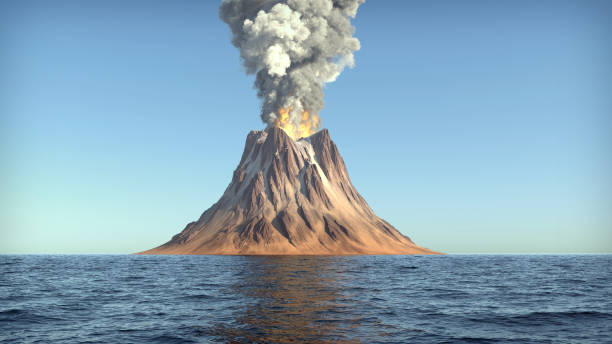
Volcanoes are powerful natural phenomena that play a crucial role in shaping the Earth’s landscape. They form new land and enrich the soil with minerals, contributing significantly to ecological balance and agricultural productivity. The Quran provides references to the transformative power of natural events, which can be related to volcanic activity. This article explores the Quranic perspective on the formation of new land and soil enrichment through volcanic activity, supported by scientific research.
Quranic References to Natural Transformations:
Surah Al-Hashr (59:24):
“He is Allah, the Creator, the Inventor, the Fashioner; to Him belong the best names. Whatever is in the heavens and earth is exalting Him. And He is the Exalted in Might, the Wise.”
Surah Ar-Rahman (55:14-15):
“He created man from clay like [that of] pottery. And He created the jinn from a smokeless flame of fire.”
Surah Al-Hijr (15:19):
“And the earth We have spread out, and excellent is the preparer.”
Surah An-Naba (78:6-7):
“Have We not made the earth a resting place? And the mountains as stakes?”
Surah At-Tur (52:6):
“And by the sea set on fire.”
These verses emphasize Allah’s role as the Creator and Sustainer of all natural phenomena, including the dynamic processes that shape the Earth’s surface.
The Role of Volcanoes in Forming New Land and Enriching Soil:
Formation of New Land:
When volcanoes erupt, they spew out lava, ash, and other materials that solidify to form new landmasses. This process is crucial for the creation of islands and the expansion of existing land.
Soil Enrichment:
Volcanic ash and lava contain essential minerals and nutrients that, when weathered and broken down, contribute to the fertility of the soil. This enriched soil is highly beneficial for agriculture.
Reflection on Quranic Verses and Volcanic Activity:
“He is Allah, the Creator, the Inventor, the Fashioner”:
This verse highlights Allah’s power in creating and shaping the earth through various natural processes, including volcanic activity.
“He created man from clay like [that of] pottery”:
The reference to clay and fire can be linked to the earth’s geological processes, including the formation of volcanic rocks and soils.
“The earth We have spread out, and excellent is the preparer”:
This verse underscores the meticulous preparation of the earth by Allah, which includes the creation of fertile land through volcanic activity.
“Have We not made the earth a resting place? And the mountains as stakes?”:
The mention of mountains as stakes can be related to volcanic mountains that stabilize the earth and contribute to land formation.
“By the sea set on fire”:
This verse can be interpreted as a reference to underwater volcanic activity that creates new landmasses and islands.
Scientific Insights into Volcanic Activity:
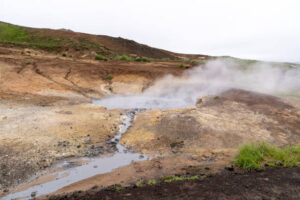
Volcanic Eruptions:
Volcanic eruptions occur when magma from within the Earth’s mantle rises to the surface, releasing gases, ash, and lava. This process is driven by tectonic activity.
Types of Volcanoes:
There are different types of volcanoes, including shield volcanoes, strato volcanoes, and cinder cone volcanoes, each with unique characteristics and eruption styles.
Formation of Islands:
Volcanic activity under the ocean can lead to the formation of islands, such as the Hawaiian Islands, which are the result of hotspot volcanism.
Soil Fertility:
Volcanic soils, also known as andisols, are rich in minerals such as potassium, phosphorus, and magnesium, making them highly fertile and productive for agriculture.
Ecosystem Support:
Volcanic regions often support unique ecosystems with specialized flora and fauna adapted to the nutrient-rich environment.
Geothermal Energy:
Volcanic activity provides a source of geothermal energy, which can be harnessed for electricity generation and heating, contributing to sustainable energy solutions.
Hazards and Benefits:
While volcanic eruptions can be hazardous, causing destruction and loss of life, they also offer significant long-term benefits through land formation and soil enrichment.
Technological Advances in Studying Volcanoes:
Remote Sensing and Satellite Monitoring:
Satellite imagery and remote sensing technologies are used to monitor volcanic activity, track eruptions, and assess the impact on the environment.
Volcanic Hazard Assessment:
Advanced techniques in hazard assessment and risk management help mitigate the effects of volcanic eruptions on human populations and infrastructure.
Geochemical Analysis:
Analyzing the chemical composition of volcanic rocks and ash provides insights into the processes occurring within the Earth’s mantle and crust.
Seismic Monitoring:
Seismographs and other geophysical instruments detect and measure seismic activity associated with volcanic eruptions, helping predict potential eruptions.
Environmental Impact Studies:
Research on the environmental impact of volcanic activity includes studying the effects on air quality, climate, and ecosystems.
Community Preparedness:
Efforts to educate and prepare communities living near volcanoes include developing evacuation plans, building resilient infrastructure, and raising awareness about volcanic hazards.
Conclusion:
Volcanoes are powerful natural phenomena that play a vital role in shaping the Earth’s landscape and enriching the soil. The Quranic references to natural transformations and Allah’s role as the Creator highlight the significance of these dynamic processes. Scientific research and technological advancements provide a deeper understanding of volcanic activity, its role in forming new land, and its contribution to soil fertility and ecological balance. Reflecting on these insights fosters a greater appreciation of Allah’s creation and encourages responsible stewardship of volcanic regions to harness their benefits while mitigating their hazards for future generations.
Quranexplains.com
Glaciers - Store freshwater

Glaciers are massive, slow-moving bodies of ice that store a significant portion of the Earth’s freshwater. These natural reservoirs play a crucial role in regulating water supply and maintaining ecological balance. The Quran, while not explicitly mentioning glaciers, provides verses that allude to the importance of water and natural phenomena, which can be related to the existence and significance of glaciers. This article explores the Quranic perspective on water storage and the scientific understanding of glaciers as vital freshwater sources.
Quranic References to Water and Natural Phenomena:
Surah An-Nahl (16:65):
“And Allah sends down from the sky rain and gives life thereby to the earth after its lifelessness. Indeed in that is a sign for a people who listen.”
Surah Al-Furqan (25:53):
“And it is He who has released [simultaneously] the two seas, one fresh and sweet and one salty and bitter, and He placed between them a barrier and prohibiting partition.”
Surah Az-Zumar (39:21):
“Do you not see that Allah sends down rain from the sky and makes it flow as springs and rivers in the earth? Then He produces thereby crops of varying colors; then they wither and you see them turned yellow; then He makes them scattered debris. Indeed in that is a reminder for those of understanding.”
Surah Al-Mulk (67:30):
“Say, ‘Have you considered: if your water was to become sunken [into the earth], then who could bring you flowing water?'”
These verses emphasize the importance of water in sustaining life and the divine wisdom in creating natural systems for water storage and distribution.
The Role of Glaciers in Storing Freshwater:
Storage of Freshwater:
Glaciers store about 69% of the world’s freshwater. This stored water is crucial for maintaining water supply during dry periods and acts as a buffer against climate variability.
Climate Regulation:
Glaciers help regulate the Earth’s climate by reflecting sunlight and maintaining a balance between incoming and outgoing solar radiation.
Water Supply:
Melting glaciers provide a continuous supply of freshwater to rivers and lakes, supporting agriculture, drinking water, and hydropower generation.
Ecosystem Support:
Glacial meltwater supports diverse ecosystems, both in mountainous regions and downstream areas, sustaining plant and animal life.
Reflection on Quranic Verses and Glaciers:
“And Allah sends down from the sky rain and gives life thereby to the earth after its lifelessness”:
This verse highlights the transformative power of water, which can be related to the life-sustaining role of glaciers as reservoirs of freshwater.
“He who has released [simultaneously] the two seas, one fresh and sweet and one salty and bitter”:
The distinction between fresh and salty water underscores the importance of freshwater sources, including glaciers, in maintaining ecological balance.
“Allah sends down rain from the sky and makes it flow as springs and rivers in the earth”:
This verse can be related to the process of glacial meltwater flowing into rivers and springs, replenishing freshwater sources.
“If your water was to become sunken [into the earth], then who could bring you flowing water?”:
The critical role of glaciers in providing flowing water highlights the divine wisdom in the natural storage of freshwater.
Scientific Insights into Glaciers:

Formation of Glaciers:
Glaciers form from the accumulation and compaction of snow over time. As snow accumulates, it compresses into ice and begins to flow under its own weight.
Types of Glaciers:
There are different types of glaciers, including valley glaciers, which flow down mountain valleys, and continental glaciers, which cover vast areas of land.
Glacial Movement:
Glaciers move slowly due to gravity, shaping the landscape through processes like erosion, transportation, and deposition.
Glacial Melt and Water Supply:
Melting glaciers provide a steady supply of freshwater to rivers and lakes, particularly during the dry season, supporting human and ecological needs.
Impact of Climate Change:
Climate change is causing glaciers to melt at an accelerated rate, threatening freshwater supplies and contributing to sea-level rise.
Glacial Lakes:
Glacial meltwater often forms lakes at the base of glaciers, which can act as important water reservoirs and support local biodiversity.
Scientific Monitoring:
Scientists monitor glaciers using satellite imagery, remote sensing, and field studies to understand their dynamics and predict future changes.
Technological Advances in Studying Glaciers:
Remote Sensing and Satellite Imagery:
Advanced technologies like satellite imagery and remote sensing are used to monitor glacial changes, measure ice thickness, and track melt rates.
Climate Models:
Climate models help predict the impact of global warming on glaciers, providing valuable data for water resource management and conservation efforts.
Glacial Hydrology:
The study of glacial hydrology involves understanding the flow of meltwater within and from glaciers, which is crucial for predicting water availability.
Environmental Impact Assessments:
Assessments of the environmental impact of glacial melting include studying the effects on freshwater ecosystems, human communities, and global sea levels.
Conservation Strategies:
Conservation strategies focus on protecting glacial regions and managing water resources sustainably to mitigate the effects of climate change.
Public Awareness and Education:
Raising public awareness about the importance of glaciers and the impact of climate change is essential for promoting conservation efforts and sustainable practices.
Conclusion:
Glaciers are vital natural reservoirs that store a significant portion of the Earth’s freshwater. The Quranic references to water and natural phenomena highlight the divine wisdom in creating and sustaining these critical resources. Scientific research and technological advancements provide a deeper understanding of glaciers’ role in freshwater storage, climate regulation, and ecological balance. Reflecting on these insights fosters a greater appreciation of Allah’s creation and encourages responsible stewardship of glacial regions to ensure their preservation and sustainability for future generations.
Earthquakes - Shape the Earth's surface

Earthquakes are powerful natural phenomena that play a significant role in shaping the Earth’s surface. These seismic events can cause dramatic changes in the landscape, influencing the formation of mountains, valleys, and other geological features. The Quran provides references to the might and wisdom of Allah in causing natural events like earthquakes. This article explores the Quranic perspective on earthquakes and their impact on the Earth’s surface, supported by scientific evidence and understanding.
Quranic References to Earthquakes:
Surah Az-Zalzalah (99:1-2):
“When the earth is shaken with its [final] earthquake. And the earth discharges its burdens.”
Surah An-Naba (78:6-7):
“Have We not made the earth a resting place? And the mountains as stakes?”
Surah Al-Hajj (22:1-2):
“O mankind, fear your Lord. Indeed, the convulsion of the [final] Hour is a terrible thing. On the Day you see it, every nursing mother will be distracted from that [child] she was nursing, and every pregnant woman will abort her pregnancy, and you will see the people [appearing] intoxicated while they are not intoxicated; but the punishment of Allah is severe.”
Surah Ar-Ra’d (13:31):
“And if there was any Qur’an by which the mountains would be removed or the earth would be broken apart or the dead would be made to speak, it would be [this Qur’an], but to Allah belongs the affair entirely.”
These verses emphasize the power of Allah in causing natural events like earthquakes, highlighting their significance as signs of His might and wisdom.
Scientific Insights into Earthquakes:
Tectonic Plate Movements:
Earthquakes are primarily caused by the movement of tectonic plates. The Earth’s lithosphere is divided into several plates that float on the semi-fluid asthenosphere beneath them. When these plates interact at their boundaries, they can cause seismic activity.
Types of Plate Boundaries:
There are three main types of plate boundaries: divergent (where plates move apart), convergent (where plates move towards each other), and transform (where plates slide past each other). Each type of boundary can produce earthquakes of varying magnitudes.
Seismic Waves:
Earthquakes generate seismic waves that travel through the Earth. These waves can be categorized into primary waves (P-waves), secondary waves (S-waves), and surface waves, each with different properties and speeds.
Measurement of Earthquakes:
The magnitude of an earthquake is measured using the Richter scale or the moment magnitude scale (Mw), while the intensity is measured using the Modified Mercalli Intensity (MMI) scale.
Impact on the Earth’s Surface:
Earthquakes can cause various geological changes, including the uplift and subsidence of land, the formation of faults, and the creation of new landforms. They can also trigger secondary hazards like landslides, tsunamis, and volcanic eruptions.
Reflection on Quranic Verses and Earthquakes:
“When the earth is shaken with its [final] earthquake. And the earth discharges its burdens”:
This verse describes the profound impact of a major earthquake, which can dramatically alter the Earth’s surface and reveal hidden geological features.
“Have We not made the earth a resting place? And the mountains as stakes?”:
The reference to mountains as stakes highlights their role in stabilizing the Earth’s crust, a concept supported by the understanding of tectonic plate interactions and mountain formation through seismic activity.
“Indeed, the convulsion of the [final] Hour is a terrible thing”:
This verse emphasizes the awe-inspiring power of earthquakes, reminding believers of Allah’s control over natural events.
“To Allah belongs the affair entirely”:
The ultimate control over all natural phenomena, including earthquakes, lies with Allah, underscoring the significance of these events as manifestations of His will.
Scientific Research on Earthquakes:

Seismology:
The study of earthquakes, known as seismology, involves the analysis of seismic waves to understand the Earth’s interior and the dynamics of tectonic plates.
Earthquake Prediction:
While precise prediction of earthquakes remains challenging, advancements in technology and research have improved the ability to identify seismic hazards and assess risks.
Earthquake Engineering:
Engineering practices aimed at designing structures to withstand seismic forces, known as earthquake engineering, are crucial for minimizing damage and enhancing resilience in earthquake-prone areas.
Global Seismic Networks:
International collaboration through global seismic networks helps monitor and analyze earthquake activity, providing valuable data for research and early warning systems.
Impact on Human Societies:
Earthquakes can have devastating effects on human societies, causing loss of life, property damage, and economic disruption. Preparedness and mitigation strategies are essential for reducing these impacts.
Technological Advances in Studying Earthquakes:
Seismic Instrumentation:
Advanced seismic instruments, such as seismometers and accelerometers, are used to detect and measure ground motion during earthquakes.
Geospatial Technologies:
Technologies like GPS and remote sensing are used to monitor crustal movements and deformation associated with tectonic activity.
Earthquake Simulation:
Computer simulations and modeling techniques help scientists understand the mechanics of earthquakes and predict their potential impacts.
Early Warning Systems:
Earthquake early warning systems use real-time seismic data to provide alerts seconds to minutes before the shaking reaches populated areas, allowing for emergency response and protective measures.
Public Awareness and Education:
Educating communities about earthquake preparedness and safety measures is vital for reducing risks and enhancing resilience.
Building Codes and Standards:
Implementing and enforcing building codes and standards that account for seismic hazards is crucial for ensuring the safety of structures in earthquake-prone regions.
Disaster Response and Recovery:
Effective disaster response and recovery plans are essential for addressing the immediate and long-term impacts of earthquakes on affected communities.
Conclusion:
Earthquakes are powerful natural events that shape the Earth’s surface and influence its geological features. The Quranic references to earthquakes highlight their significance as manifestations of Allah’s power and wisdom. Scientific research provides a deeper understanding of the causes and effects of earthquakes, emphasizing the importance of preparedness and resilience. By reflecting on these insights, believers can appreciate the divine wisdom in natural events and take practical steps to mitigate the risks associated with earthquakes, ensuring the safety and well-being of communities.
Lightning - Balances atmospheric electricity

Lightning is a spectacular and powerful natural phenomenon that plays a critical role in balancing atmospheric electricity. The Quran mentions lightning in several verses, highlighting its significance and the awe it inspires. This article explores the Quranic perspective on lightning, complemented by scientific research that explains its function in maintaining atmospheric balance.
Quranic References to Lightning:
Surah Ar-Ra’d (13:12-13):
“It is He who shows you the lightning, [causing] fear and aspiration, and generates the heavy clouds. And the thunder exalts [Allah] with praise of Him – and the angels [as well] from fear of Him – and He sends thunderbolts and strikes therewith whom He wills, yet they dispute about Allah; and He is severe in assault.”
Surah An-Nur (24:43):
“Do you not see that Allah drives clouds? Then He brings them together, then He makes them into a mass, and you see the rain emerge from within it. And He sends down from the sky mountains [of clouds] within which is hail, and He strikes with it whom He wills and averts it from whom He wills. The flash of its lightning almost takes away the eyesight.”
These verses emphasize the power and majesty of lightning, describing its role in the natural processes and the awe it inspires among people.
Scientific Insights into Lightning:
Formation of Lightning:
Lightning is a discharge of electricity that occurs during storms. It is caused by the buildup of electrical charges in clouds. When the difference in electrical potential between clouds and the ground becomes large enough, a discharge occurs, resulting in lightning.
Electric Charges in Clouds:
Within storm clouds, turbulent air currents cause the collision of ice particles, leading to the separation of positive and negative charges. Typically, the upper part of the cloud becomes positively charged, while the lower part becomes negatively charged.
Discharge Process:
When the electrical potential difference is significant, a leader of negative charge descends from the cloud toward the ground. When it gets close enough, a positive streamer rises to meet it, creating a channel through which a large current flows, resulting in the visible flash of lightning.
Types of Lightning:
There are several types of lightning, including cloud-to-ground, intra-cloud, and cloud-to-cloud lightning. Each type involves different pathways and interactions of electrical charges.
Role of Lightning in Balancing Atmospheric Electricity:
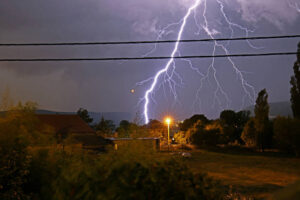
Electric Field Maintenance:
Lightning helps maintain the Earth’s electric field. The Earth’s surface and the atmosphere form a giant capacitor, with the Earth being negatively charged and the upper atmosphere positively charged. Lightning discharges help balance this electrical potential.
Nitrogen Fixation:
Lightning plays a role in nitrogen fixation, converting atmospheric nitrogen (N2) into nitrogen compounds (NOx) that are usable by plants. This natural process enriches the soil and supports plant growth.
Energy Transfer:
The immense energy released during a lightning strike helps redistribute heat and energy in the atmosphere, contributing to the dynamic processes of weather and climate.
Reflection on Quranic Verses and Scientific Insights:
“He who shows you the lightning, [causing] fear and aspiration”:
This verse reflects the dual nature of lightning as both awe-inspiring and beneficial. Scientifically, this aligns with the understanding that lightning, while powerful and potentially dangerous, plays crucial roles in atmospheric processes.
“The thunder exalts [Allah] with praise of Him”:
The Quranic depiction of thunder praising Allah can be seen as a metaphor for the natural processes that are signs of divine wisdom and power. Thunder, the sound produced by lightning, signifies the immense energy and power at work in the natural world.
“He sends down from the sky mountains [of clouds] within which is hail, and He strikes with it whom He wills”:
This verse highlights the role of clouds and lightning in weather phenomena, with a focus on their unpredictability and the divine control over natural events. Scientifically, it aligns with the understanding of how clouds and lightning interact in complex atmospheric processes.
Technological Advances in Studying Lightning:
Lightning Detection Networks:
Modern technology has enabled the development of lightning detection networks that monitor and map lightning activity globally. These systems provide valuable data for weather forecasting and climate studies.
High-Speed Cameras:
High-speed cameras capture detailed images of lightning strikes, allowing scientists to study the formation and structure of lightning in greater detail.
Field Studies and Experiments:
Field studies and experiments using instruments like lightning rods and sensors help scientists understand the electrical properties of lightning and its effects on the environment.
Satellite Observations:
Satellites equipped with sensors monitor lightning activity from space, providing comprehensive data on global lightning patterns and their impact on the Earth’s atmosphere.
Importance of Understanding Lightning:
Weather Prediction:
Understanding lightning is crucial for improving weather prediction models, particularly in forecasting severe storms and related hazards.
Safety Measures:
Knowledge of lightning behavior informs safety measures and protocols to protect people, infrastructure, and natural resources from lightning-related damage.
Environmental Impact:
Studying lightning helps assess its impact on ecosystems, including its role in forest fires, soil nutrient cycles, and atmospheric chemistry.
Advancements in Lightning Protection:
Research on lightning has led to advancements in lightning protection systems for buildings, aircraft, and other structures, enhancing safety and resilience.
Conclusion:
Lightning is a powerful natural phenomenon that balances atmospheric electricity and supports various ecological processes. The Quranic references to lightning highlight its significance and the awe it inspires, reflecting divine wisdom in natural events. Scientific research provides a deeper understanding of the mechanisms and benefits of lightning, emphasizing its role in maintaining atmospheric balance and supporting life on Earth. By integrating Quranic insights with scientific knowledge, we can appreciate the intricate design of natural phenomena and the importance of studying and respecting them.
Trees - Provide oxygen and shelter

Trees play a vital role in sustaining life on Earth. They provide oxygen, store carbon, offer shelter, and support biodiversity. The Quran highlights the significance of trees, encouraging their preservation and appreciation. This article explores Quranic references to trees and their benefits, complemented by scientific research that elucidates their critical roles in the environment.
Quranic References to Trees
Surah An-Nahl (16:10-11):
“It is He who sends down rain from the sky; from it is drink and from it is foliage in which you pasture [animals]. He causes to grow for you thereby the crops, the olives, the date palms, the grapevines, and from all the fruits. Indeed, in that is a sign for a people who give thought.”
Surah An-Nahl (16:68-69):
“And your Lord inspired to the bee, ‘Take for yourself among the mountains, houses, and among the trees and [in] that which they construct. Then eat from all the fruits and follow the ways of your Lord laid down [for you].’ There emerges from their bellies a drink, varying in colors, in which there is healing for people. Indeed, in that is a sign for a people who give thought.”
Surah Ya-Sin (36:33-35):
“And a sign for them is the dead earth. We have brought it to life and brought forth from it grain, and from it they eat. And We placed therein gardens of palm trees and grapevines and caused to burst forth therefrom some springs – That they may eat of His fruit. And their hands have not produced it, so will they not be grateful?”
Surah Al-An’am (6:99):
“And it is He who sends down rain from the sky, and We produce thereby the growth of all things. We produce from it greenery from which We produce grains arranged in layers. And from the palm trees – of its emerging fruit are clusters hanging low. And [We produce] gardens of grapevines, and olives, and pomegranates, similar yet varied. Look at [each of] its fruit when it yields and [at] its ripening. Indeed in that are signs for a people who believe.”
These verses emphasize the divine provision of trees and plants, highlighting their importance for sustenance, beauty, and ecological balance.
Scientific Insights into the Role of Trees
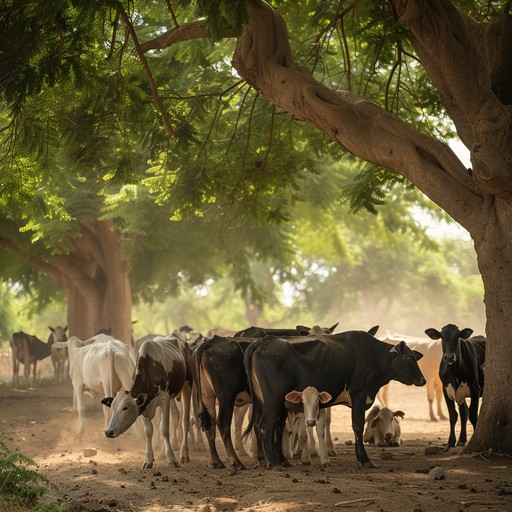
Oxygen Production:
Trees are crucial for producing oxygen through the process of photosynthesis. During this process, trees absorb carbon dioxide (CO2) and water (H2O) and, using sunlight, convert these into oxygen (O2) and glucose (C6H12O6). One large tree can provide a day’s supply of oxygen for up to four people.
Carbon Sequestration:
Trees act as carbon sinks, absorbing CO2 from the atmosphere and storing it in their biomass (trunks, branches, leaves, and roots) and in the soil. This helps mitigate the effects of climate change by reducing the overall concentration of greenhouse gases in the atmosphere.
Shelter and Habitat:
Trees provide habitat and shelter for countless species of animals, birds, insects, and microorganisms. Forests are home to approximately 80% of the world’s terrestrial biodiversity. They offer nesting sites, food sources, and protection from predators and harsh weather conditions.
Soil Conservation:
Trees help prevent soil erosion by stabilizing the soil with their root systems. They also contribute to soil fertility through the decomposition of fallen leaves and organic matter, which enriches the soil with essential nutrients.
Water Cycle Regulation:
Trees play a vital role in the water cycle. They absorb and store water, release it into the atmosphere through transpiration, and help regulate water flow, reducing the risk of floods and maintaining groundwater levels.
Reflection on Quranic Verses and Scientific Insights
“He causes to grow for you thereby the crops, the olives, the date palms, the grapevines, and from all the fruits”:
This verse underscores the variety of beneficial plants and trees provided by Allah, aligning with the scientific understanding of trees as essential sources of food and ecological balance.
“Take for yourself among the mountains, houses, and among the trees”:
The reference to bees taking shelter among trees highlights the interdependence of species and the role of trees in providing habitats, consistent with ecological studies on biodiversity.
“We placed therein gardens of palm trees and grapevines”:
The Quranic description of gardens and the growth of various plants reflects the significance of diverse vegetation in sustaining life, similar to the scientific emphasis on biodiversity and ecosystem health.
“We produce from it greenery from which We produce grains arranged in layers”:
This verse highlights the process of plant growth and productivity, mirroring the scientific explanation of photosynthesis and the role of trees in producing food and oxygen.
Technological Advances in Studying Trees
Remote Sensing and Satellite Imagery:
Technologies such as remote sensing and satellite imagery allow scientists to monitor forest cover, track deforestation, and study the health of forests on a global scale.
Dendrochronology:
The study of tree rings, known as dendrochronology, helps scientists understand past climate conditions, tree growth patterns, and ecological changes over time.
Genetic Research:
Advances in genetic research have led to the development of tree varieties with improved growth rates, disease resistance, and adaptability to changing environmental conditions.
Conservation Technology:
Modern conservation techniques, including reforestation and afforestation projects, use technology to enhance the survival and growth of trees in degraded or deforested areas.
Urban Forestry:
Urban forestry involves the management and study of trees in urban environments, using technology to maximize their benefits for air quality, temperature regulation, and human well-being.
Importance of Trees in Islamic Teachings and Scientific Understanding
Environmental Stewardship:
Islam emphasizes the importance of caring for the environment. The Prophet Muhammad (peace be upon him) encouraged planting trees, stating, “If a Muslim plants a tree or sows seeds, and then a bird, or a person, or an animal eats from it, it is regarded as a charitable gift (Sadaqah) for him” (Sahih al-Bukhari).
Climate Regulation:
Trees help regulate the Earth’s climate by absorbing CO2, providing shade, and cooling the air through transpiration, which aligns with the Quranic emphasis on their ecological benefits.
Health and Well-being:
Trees contribute to human health and well-being by improving air quality, providing recreational spaces, and offering psychological benefits, such as stress reduction and improved mental health.
Economic Value:
Trees provide economic benefits through the production of timber, fruits, nuts, and other resources. Sustainable forestry practices ensure that these resources are available for future generations.
Conclusion
Trees are indispensable to life on Earth, providing oxygen, shelter, and numerous ecological benefits. The Quranic references to trees highlight their significance and the divine wisdom in their creation. Scientific research further elucidates the critical roles that trees play in maintaining environmental balance, supporting biodiversity, and enhancing human well-being. By integrating Quranic insights with scientific knowledge, we can better appreciate the importance of trees and the need for their preservation and sustainable management. More info QuranExplains com
Flowers - Beautify the world and support pollinators

Flowers play an essential role in ecosystems and human life. They not only beautify the world but also support pollinators, which are crucial for the reproduction of many plants. This article explores the Quranic references to flowers and their benefits, complemented by scientific research that highlights their ecological and aesthetic significance.
Quranic References to Flowers
Surah An-Nahl (16:69):
“Then eat from all the fruits and follow the ways of your Lord laid down [for you]. There emerges from their bellies a drink, varying in colors, in which there is healing for people. Indeed, in that is a sign for a people who give thought.”
Surah Ar-Rahman (55:37-38):
“When the heaven is split open and becomes rose-colored like oil – So which of the favors of your Lord would you deny?”
Surah Qaf (50:7-8):
“And the earth – We spread it out and cast therein firmly set mountains and made grow therein [something] of every beautiful kind, Giving insight and a reminder for every servant who turns [to Allah].”
These verses highlight the beauty and diversity of Allah’s creation, including plants and flowers, which are signs for those who reflect.
Scientific Insights into the Role of Flowers
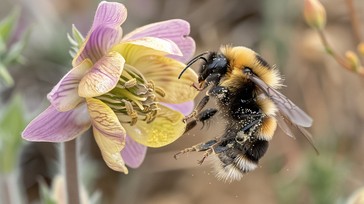
Pollination:
Flowers play a critical role in the process of pollination, which is essential for the reproduction of many plants. Pollinators, such as bees, butterflies, and birds, transfer pollen from one flower to another, enabling the formation of seeds and fruits.
Biodiversity Support:
Flowers support biodiversity by providing nectar and pollen, which serve as food sources for various pollinators. This interaction is vital for the survival of many species and the stability of ecosystems.
Aesthetic and Psychological Benefits:
The beauty of flowers has significant psychological benefits. Studies have shown that exposure to flowers can improve mood, reduce stress, and enhance overall well-being. The presence of flowers in environments such as homes, workplaces, and hospitals can promote healing and comfort.
Cultural and Economic Value:
Flowers hold cultural significance in many societies and are used in ceremonies, decorations, and as symbols of love and peace. They also have economic value, as the floriculture industry supports livelihoods through the cultivation and sale of flowers.
Medicinal Properties:
Many flowers possess medicinal properties and are used in traditional and modern medicine. For example, chamomile flowers are known for their calming effects, while echinacea flowers are used to boost the immune system.
Reflection on Quranic Verses and Scientific Insights
“There emerges from their bellies a drink, varying in colors, in which there is healing for people”:
This verse reflects the diversity and healing properties of plants and flowers, aligning with scientific findings on the medicinal benefits of various flowers.
“When the heaven is split open and becomes rose-colored like oil”:
The imagery of rose-colored skies highlights the natural beauty and symbolic significance of flowers, resonating with their aesthetic and cultural value.
“Made grow therein [something] of every beautiful kind, giving insight and a reminder for every servant who turns [to Allah]”:
This verse emphasizes the diversity and beauty of plant life as signs of Allah’s creation, encouraging reflection and gratitude.
Technological Advances in Studying Flowers
Pollination Biology:
Advances in pollination biology have enhanced our understanding of the relationships between flowers and pollinators, leading to improved conservation strategies for both plants and pollinators.
Genetic Research:
Genetic research on flowers has led to the development of new flower varieties with enhanced colors, fragrances, and resistance to diseases, benefiting the floriculture industry.
Ecological Modeling:
Ecological modeling helps scientists study the impact of environmental changes on flower-pollinator interactions, aiding in the conservation of biodiversity and ecosystem services.
Remote Sensing:
Remote sensing technology allows scientists to monitor flower populations and their habitats on a large scale, providing valuable data for conservation and land management.
Importance of Flowers in Islamic Teachings and Scientific Understanding
Environmental Stewardship:
Islam encourages the preservation and appreciation of nature, including flowers. The Prophet Muhammad (peace be upon him) said, “If a Muslim plants a tree or sows seeds, and then a bird, or a person, or an animal eats from it, it is regarded as a charitable gift (Sadaqah) for him” (Sahih al-Bukhari).
Ecosystem Health:
Flowers contribute to the health and stability of ecosystems by supporting pollinators and promoting biodiversity, aligning with the Quranic emphasis on the balance and interconnectedness of creation.
Cultural Significance:
Flowers hold cultural significance in various Islamic traditions and are used in religious ceremonies, decorations, and as symbols of beauty and purity.
Economic Benefits:
The cultivation and sale of flowers support economic development, particularly in rural areas, and provide livelihoods for many people.
Psychological Well-being:
The presence of flowers enhances psychological well-being by reducing stress, promoting relaxation, and improving mood, consistent with the Quranic view of nature as a source of comfort and inspiration.
Conclusion
Flowers are vital components of ecosystems, providing oxygen, supporting pollinators, and enhancing the beauty of the world. The Quranic references to flowers highlight their significance and the divine wisdom in their creation. Scientific research further elucidates the critical roles that flowers play in maintaining ecological balance, supporting biodiversity, and promoting human well-being. By integrating Quranic insights with scientific knowledge, we can better appreciate the importance of flowers and the need for their preservation and sustainable management
.Quranexplainscom
Grass - Stabilizes soil and supports herbivores

Grass is a fundamental component of many ecosystems, playing a crucial role in soil stabilization and supporting herbivores. This article explores the Quranic references to grass and its benefits, complemented by scientific research that highlights its ecological and environmental significance.
Quranic References to Grass
Surah An-Naba (78:15-16):
“And We sent down from the rain clouds pouring water that We may bring forth thereby grain and vegetation and gardens of entwined growth.”
Surah Abasa (80:24-32):
“Then let mankind look at his food – How We poured down water in torrents, Then We broke open the earth, splitting [it with sprouts], And caused to grow within it grain, And grapes and herbage, And olives and palm trees, And gardens of dense shrubbery, And fruit and grass, [As] enjoyment for you and your grazing livestock.”
These verses emphasize the importance of vegetation, including grass, as a provision from Allah for both humans and animals.
Scientific Insights into the Role of Grass

Soil Stabilization:
Grass plays a critical role in preventing soil erosion. The roots of grass bind the soil particles together, reducing the risk of erosion caused by wind and water. This helps maintain soil health and fertility.
Support for Herbivores:
Grasslands provide essential forage for herbivores, such as cattle, sheep, goats, and wild ungulates. These animals rely on grass for their nutrition, and in turn, they play a role in maintaining the balance of these ecosystems through grazing.
Carbon Sequestration:
Grasslands act as significant carbon sinks. They capture and store carbon dioxide from the atmosphere, which helps mitigate climate change by reducing greenhouse gas levels.
Biodiversity:
Grasslands support a diverse array of plant and animal species. They provide habitat and food sources for insects, birds, and mammals, contributing to the overall biodiversity of an area.
Water Cycle Regulation:
Grasslands play a role in the water cycle by absorbing rainwater, reducing runoff, and recharging groundwater supplies. This helps in maintaining the availability of fresh water and preventing floods.
Reflection on Quranic Verses and Scientific Insights
“We sent down from the rain clouds pouring water that We may bring forth thereby grain and vegetation”:
This verse highlights the connection between rainfall and the growth of vegetation, including grass, which is crucial for sustaining life. Scientifically, it aligns with the understanding of how precipitation supports plant growth and ecosystem health.
“Caused to grow within it grain, and grapes and herbage, and olives and palm trees”:
The mention of herbage, which includes grass, underscores its importance as a part of the natural provision for living beings. It reflects the scientific perspective on the ecological roles of grasslands in supporting food chains and maintaining soil health.
Technological Advances in Studying Grass
Remote Sensing:
Remote sensing technologies, such as satellite imagery, allow scientists to monitor grassland health, track changes in vegetation cover, and assess the impacts of land use and climate change on grasslands.
Soil Health Monitoring:
Advances in soil science and monitoring techniques help in assessing the health and fertility of soils in grasslands. This includes studying soil composition, nutrient levels, and microbial activity.
Grazing Management:
Sustainable grazing practices and technologies help in managing livestock grazing on grasslands to prevent overgrazing and degradation. This includes rotational grazing systems and the use of grazing impact assessments.
Climate Modeling:
Climate models help predict the effects of climate change on grassland ecosystems. These models provide insights into how changes in temperature, precipitation, and atmospheric CO2 levels might affect grass growth and carbon sequestration.
Importance of Grass in Islamic Teachings and Scientific Understanding
Environmental Stewardship:
Islam emphasizes the importance of caring for the environment. The Prophet Muhammad (peace be upon him) encouraged the planting and preservation of vegetation, including grass, for its ecological benefits and as a form of charity.
Ecosystem Health:
Grasslands contribute to the health and stability of ecosystems by preventing soil erosion, supporting herbivores, and enhancing biodiversity, which aligns with the Quranic emphasis on the balance and interconnectedness of creation.
Climate Regulation:
Grasslands help regulate the Earth’s climate by sequestering carbon, reducing greenhouse gases, and influencing local weather patterns. This is consistent with the Quranic view of natural systems working in harmony.
Economic and Nutritional Value:
Grasslands provide economic benefits through livestock grazing, which supports agriculture and food production. They are also a source of nutrition for herbivores, which in turn support human livelihoods.
Conclusion
Grass is an essential component of Earth’s ecosystems, playing a vital role in soil stabilization, supporting herbivores, and contributing to biodiversity and climate regulation. The Quranic references to grass highlight its significance and the divine wisdom in its creation. Scientific research further elucidates the critical roles that grasslands play in maintaining environmental balance, supporting life, and enhancing human well-being. By integrating Quranic insights with scientific knowledge, we can better appreciate the importance of grass and the need for its preservation and sustainable management.
Fruits - Provide nutrition

Fruits are a vital source of nutrition and have numerous health benefits. They are mentioned frequently in the Quran, highlighting their significance as a divine provision for humanity. This article explores Quranic references to fruits and their benefits, complemented by scientific research that underscores their nutritional and health benefits.
Quranic References to Fruits
Surah An-Nahl (16:11):
“With it He causes crops to grow for you, the olives, the date-palms, the grapes, and every kind of fruit. Surely in this is a sign for people who reflect.”
Surah Ar-Rahman (55:68):
“In them are fruits, date-palms, and pomegranates.”
Surah Al-An’am (6:99):
“And it is He who sends down rain from the sky, and We produce thereby the growth of all things. We produce from it greenery from which We produce grains arranged in layers. And from the palm trees—of its emerging fruit are clusters hanging low. And gardens of grapevines, and olives, and pomegranates, similar and dissimilar. Look at [each of] its fruit when it yields and [at] its ripening. Indeed in that are signs for a people who believe.”
These verses emphasize the blessings and signs in the fruits provided by Allah, encouraging reflection and gratitude for these provisions.
Scientific Insights into the Role of Fruits

Nutritional Value:
Fruits are rich in essential vitamins, minerals, fiber, and antioxidants. They provide vital nutrients such as vitamin C, potassium, and folate, which are crucial for maintaining overall health and preventing deficiencies.
Health Benefits:
Regular consumption of fruits is associated with a lower risk of chronic diseases such as heart disease, stroke, and certain types of cancer. The antioxidants in fruits help protect cells from damage, while fiber supports digestive health and helps control blood sugar levels.
Hydration:
Many fruits have high water content, which helps in maintaining hydration. For example, watermelon and cucumber are composed of over 90% water, making them excellent choices for staying hydrated.
Energy Supply:
Fruits provide natural sugars like fructose, which offer a quick source of energy. They are an ideal snack for replenishing energy levels during the day.
Weight Management:
Fruits are low in calories and high in fiber, which helps in feeling full and satisfied. This can aid in weight management and prevent overeating.
Reflection on Quranic Verses and Scientific Insights
“With it He causes crops to grow for you, the olives, the date-palms, the grapes, and every kind of fruit”:
This verse highlights the variety and abundance of fruits provided by Allah, which are essential for human nutrition and well-being. Scientifically, it aligns with the understanding of fruits as a diverse and rich source of nutrients.
“In them are fruits, date-palms, and pomegranates”:
The specific mention of date-palms and pomegranates underscores their nutritional and health benefits. Dates are known for their high energy content, while pomegranates are rich in antioxidants.
“Look at [each of] its fruit when it yields and [at] its ripening”:
This verse encourages reflection on the growth and ripening process of fruits, which is a sign of Allah’s creative power. It also aligns with the scientific understanding of the natural processes involved in fruit development and maturation.
Technological Advances in Studying Fruits
Nutritional Analysis:
Advanced technologies in nutritional science allow for detailed analysis of the nutrient composition of various fruits, helping to identify their health benefits and potential therapeutic uses.
Genetic Research:
Genetic research has led to the development of fruit varieties with enhanced nutritional profiles, improved taste, and resistance to pests and diseases, benefiting both consumers and farmers.
Post-Harvest Technology:
Innovations in post-harvest technology, such as controlled atmosphere storage and refrigeration, help in preserving the freshness and nutritional quality of fruits during transportation and storage.
Agricultural Practices:
Modern agricultural practices, including precision farming and sustainable agriculture, optimize fruit production while minimizing environmental impact. This ensures a steady supply of high-quality fruits.
Importance of Fruits in Islamic Teachings and Scientific Understanding
Environmental Stewardship:
Islam encourages the preservation and sustainable use of natural resources, including fruits. The Prophet Muhammad (peace be upon him) emphasized the importance of planting and nurturing trees and plants, which provide fruits and other benefits.
Ecosystem Health:
Fruit-bearing plants contribute to ecosystem health by providing food for humans and animals, supporting pollinators, and enhancing biodiversity.
Economic Value:
Fruits are a valuable agricultural product that supports economies, particularly in rural areas. The cultivation and sale of fruits provide livelihoods for many people.
Cultural Significance:
Fruits hold cultural and religious significance in many societies. They are used in various traditions, celebrations, and rituals, symbolizing abundance and blessings.
Health and Well-being:
The consumption of fruits is integral to maintaining health and well-being, reflecting the Quranic emphasis on the importance of nutritious and wholesome food.
Conclusion
Fruits are a divine provision that offer numerous nutritional and health benefits. The Quranic references to fruits highlight their significance as signs of Allah’s creativity and mercy. Scientific research further elucidates the critical roles that fruits play in maintaining health, supporting ecosystems, and sustaining economies. By integrating Quranic insights with scientific knowledge, we can better appreciate the importance of fruits and the need for their preservation, sustainable management, and regular consumption for a healthy and balanced life.
Vegetables - Essential for a balanced diet

Vegetables are a fundamental component of a balanced diet, providing essential nutrients and health benefits. This article explores Quranic references to vegetables and their importance, complemented by scientific research that highlights their nutritional and health significance.
Quranic References to Vegetables
Surah Al-Baqarah (2:61):
“And [recall] when you said, ‘O Moses, we can never endure one [kind of] food. So call upon your Lord to bring forth for us from the earth its green herbs, its cucumbers, its garlic, its lentils, and its onions.’ He said, ‘Would you exchange what is better for what is less? Go into [any] settlement and indeed, you will have what you have asked.’ And they were covered with humiliation and poverty and returned with anger from Allah. That was because they [repeatedly] disbelieved in the signs of Allah and killed the prophets without right. That was because they disobeyed and were [habitually] transgressing.”
This verse highlights the importance of a variety of vegetables as part of a diet and reflects on the significance of gratitude for divine provisions.
Scientific Insights into the Role of Vegetables
Nutritional Value:
Vegetables are rich in essential vitamins (such as A, C, K, and folate), minerals (such as potassium and magnesium), fiber, and antioxidants. They provide vital nutrients that support overall health and prevent deficiencies.
Health Benefits:
Regular consumption of vegetables is associated with a lower risk of chronic diseases, including heart disease, hypertension, diabetes, and certain cancers. The antioxidants in vegetables help protect cells from damage, while fiber supports digestive health and helps control blood sugar levels.
Hydration:
Many vegetables have high water content, which helps in maintaining hydration. For example, cucumbers and leafy greens are composed of a significant percentage of water, making them excellent choices for staying hydrated.
Energy Supply:
Vegetables provide natural sugars and carbohydrates, which offer a source of energy. They are an ideal addition to meals for maintaining steady energy levels throughout the day.
Weight Management:
Vegetables are low in calories and high in fiber, which helps in feeling full and satisfied. This can aid in weight management and prevent overeating.
Reflection on Quranic Verses and Scientific Insights

“Green herbs, cucumbers, garlic, lentils, and onions”:
This verse highlights the variety and abundance of vegetables provided by Allah, which are essential for human nutrition and well-being. Scientifically, it aligns with the understanding of vegetables as a diverse and rich source of nutrients.
Technological Advances in Studying Vegetables
Nutritional Analysis:
Advanced technologies in nutritional science allow for detailed analysis of the nutrient composition of various vegetables, helping to identify their health benefits and potential therapeutic uses.
Genetic Research:
Genetic research has led to the development of vegetable varieties with enhanced nutritional profiles, improved taste, and resistance to pests and diseases, benefiting both consumers and farmers.
Post-Harvest Technology:
Innovations in post-harvest technology, such as controlled atmosphere storage and refrigeration, help in preserving the freshness and nutritional quality of vegetables during transportation and storage.
Agricultural Practices:
Modern agricultural practices, including precision farming and sustainable agriculture, optimize vegetable production while minimizing environmental impact. This ensures a steady supply of high-quality vegetables.
Importance of Vegetables in Islamic Teachings and Scientific Understanding
Environmental Stewardship:
Islam encourages the preservation and sustainable use of natural resources, including vegetables. The Prophet Muhammad (peace be upon him) emphasized the importance of planting and nurturing vegetation for its ecological benefits.
Ecosystem Health:
Vegetable crops contribute to ecosystem health by supporting biodiversity and improving soil health through practices like crop rotation and cover cropping.
Economic Value:
Vegetables are a valuable agricultural product that supports economies, particularly in rural areas. The cultivation and sale of vegetables provide livelihoods for many people.
Cultural Significance:
Vegetables hold cultural and dietary significance in many societies. They are used in various culinary traditions and are an integral part of meals, symbolizing health and nourishment.
Health and Well-being:
The consumption of vegetables is integral to maintaining health and well-being, reflecting the Quranic emphasis on the importance of nutritious and wholesome food.
Conclusion
Vegetables are a divine provision that offers numerous nutritional and health benefits. The Quranic references to vegetables highlight their significance as signs of Allah’s creativity and mercy. Scientific research further elucidates the critical roles that vegetables play in maintaining health, supporting ecosystems, and sustaining economies. By integrating Quranic insights with scientific knowledge, we can better appreciate the importance of vegetables and the need for their preservation, sustainable management, and regular consumption for a healthy and balanced life.
Herbs - Used in medicine and cooking

Herbs have been a fundamental part of human history, serving both culinary and medicinal purposes. They are mentioned in the Quran and have been used in traditional Islamic medicine for centuries. This article explores Quranic references to herbs and their importance, complemented by scientific research that highlights their medicinal and culinary benefits.
Quranic References to Herbs
Surah Al-Baqarah (2:61):
“And [recall] when you said, ‘O Moses, we can never endure one [kind of] food. So call upon your Lord to bring forth for us from the earth its green herbs, its cucumbers, its garlic, its lentils, and its onions.’ He said, ‘Would you exchange what is better for what is less? Go into [any] settlement and indeed, you will have what you have asked.’ And they were covered with humiliation and poverty and returned with anger from Allah. That was because they [repeatedly] disbelieved in the signs of Allah and killed the prophets without right. That was because they disobeyed and were [habitually] transgressing.”
This verse highlights the significance of green herbs as part of the diet provided by Allah, emphasizing their importance in nutrition and health.
Scientific Insights into the Role of Herbs
Medicinal Value:
Herbs are rich in bioactive compounds, such as polyphenols, flavonoids, and essential oils, which have various medicinal properties. These compounds have anti-inflammatory, antioxidant, antimicrobial, and anticancer effects, making herbs valuable in preventing and treating various health conditions.
Nutritional Benefits:
Herbs are low in calories but rich in vitamins (such as A, C, and K), minerals (such as iron and calcium), and fiber. They contribute to a balanced diet and support overall health.
Culinary Uses:
Herbs enhance the flavor, aroma, and color of dishes, making meals more enjoyable and palatable. Common culinary herbs include basil, parsley, cilantro, thyme, rosemary, and oregano.
Health Benefits:
Regular consumption of herbs is associated with improved digestion, boosted immunity, and reduced risk of chronic diseases. For example, garlic is known for its cardiovascular benefits, while turmeric has potent anti-inflammatory properties.
Reflection on Quranic Verses and Scientific Insights

“Green herbs, cucumbers, garlic, lentils, and onions”:
This verse highlights the variety and abundance of herbs and other plant-based foods provided by Allah, which are essential for human nutrition and well-being. Scientifically, it aligns with the understanding of herbs as a diverse and rich source of nutrients and medicinal compounds.
Technological Advances in Studying Herbs
Phytochemical Analysis:
Advanced technologies in phytochemistry allow for the detailed analysis of bioactive compounds in herbs, helping to identify their therapeutic properties and potential health benefits.
Clinical Research:
Clinical studies on herbs and their extracts have provided evidence of their efficacy in treating various ailments, supporting their use in both traditional and modern medicine.
Agricultural Practices:
Modern agricultural practices, including organic farming and sustainable agriculture, optimize herb production while minimizing environmental impact. This ensures a steady supply of high-quality herbs for culinary and medicinal use.
Importance of Herbs in Islamic Teachings and Scientific Understanding
Environmental Stewardship:
Islam encourages the preservation and sustainable use of natural resources, including herbs. The Prophet Muhammad (peace be upon him) emphasized the importance of utilizing natural remedies and maintaining a healthy diet.
Ecosystem Health:
Herbs play a crucial role in ecosystems by supporting biodiversity and enhancing soil health through practices like crop rotation and companion planting.
Economic Value:
Herbs are a valuable agricultural product that supports economies, particularly in rural areas. The cultivation and sale of herbs provide livelihoods for many people.
Cultural Significance:
Herbs hold cultural and dietary significance in many societies. They are used in various culinary traditions, medicinal practices, and rituals, symbolizing health and wellness.
Health and Well-being:
The consumption and use of herbs in medicine are integral to maintaining health and well-being, reflecting the Quranic emphasis on the importance of nutritious and wholesome food and natural remedies.
Conclusion
Herbs are a divine provision that offers numerous nutritional, medicinal, and culinary benefits. The Quranic references to herbs highlight their significance as signs of Allah’s creativity and mercy. Scientific research further elucidates the critical roles that herbs play in maintaining health, supporting ecosystems, and sustaining economies. By integrating Quranic insights with scientific knowledge, we can better appreciate the importance of herbs and the need for their preservation, sustainable management, and regular use for a healthy and balanced life.
Crops - Sustain human populations
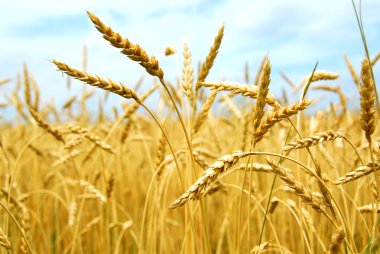
Crops are fundamental to human survival, providing essential food and nutrients. This article explores Quranic references to crops and their significance, complemented by scientific research that highlights their crucial role in sustaining human populations.
Quranic References to Crops
Surah Al-An’am (6:99):
“And it is He who sends down rain from the sky, and We produce thereby the growth of all things. We produce from it greenery from which We produce grains arranged in layers. And from the palm trees—of its emerging fruit are clusters hanging low. And [We produce] gardens of grapevines and olives and pomegranates, similar yet varied. Look at [each of] its fruit when it yields and [at] its ripening. Indeed in that are signs for a people who believe.”
This verse highlights Allah’s provision of crops through rain, emphasizing their variety and importance in sustaining life.
Surah Abasa (80:24-32):
“Then let mankind look at his food – How We poured down water in torrents, Then We broke open the earth, splitting [it with sprouts], And caused to grow within it grain, And grapes and herbage, And olive and palm trees, And gardens of dense shrubbery, And fruit and grass – [As] enjoyment for you and your grazing livestock.”
These verses illustrate the process of crop growth as a sign of Allah’s mercy and provision, encouraging reflection on the sustenance provided by these crops.
Scientific Insights into the Role of Crops
Nutritional Value:
Crops such as grains, fruits, and vegetables are rich in essential nutrients, including carbohydrates, proteins, fats, vitamins, and minerals. They form the backbone of human nutrition and are vital for maintaining health and well-being.
Economic Importance:
Agriculture is a critical sector in many economies, providing employment and livelihoods for millions of people worldwide. Crops are a major source of income and trade, contributing significantly to economic development.
Food Security:
Crops are essential for food security, ensuring that populations have access to sufficient, safe, and nutritious food. Sustainable crop production is key to addressing hunger and malnutrition globally.
Environmental Benefits:
Crops play a vital role in the environment, supporting biodiversity, improving soil health, and contributing to carbon sequestration. Practices such as crop rotation and sustainable farming enhance these benefits.
Reflection on Quranic Verses and Scientific Insights
“Growth of all things,” “grains arranged in layers”:
These phrases emphasize the diversity and complexity of crops, reflecting their nutritional and ecological significance as provided by Allah. Scientifically, it aligns with the understanding of crops as a diverse and essential source of food and ecological services.
Technological Advances in Studying Crops
Genetic Research:
Advances in genetic research have led to the development of crop varieties with enhanced yield, nutritional quality, and resistance to pests and diseases, improving food security and agricultural sustainability.
Precision Agriculture:
Precision agriculture technologies, such as satellite imaging and IoT sensors, optimize crop management by providing detailed information on soil conditions, weather patterns, and crop health, leading to more efficient and sustainable farming practices.
Biotechnology:
Biotechnology plays a crucial role in crop improvement, enabling the development of genetically modified crops that can withstand harsh environmental conditions, resist pests and diseases, and have improved nutritional profiles.
Agroecology:
Agroecology promotes sustainable farming practices that work in harmony with nature, enhancing biodiversity, improving soil health, and reducing the environmental impact of agriculture.
Importance of Crops in Islamic Teachings and Scientific Understanding
Environmental Stewardship:
Islam encourages the preservation and sustainable use of natural resources, including crops. The Prophet Muhammad (peace be upon him) emphasized the importance of agriculture and caring for the earth.
Ecosystem Health:
Crops contribute to ecosystem health by supporting biodiversity, improving soil structure, and providing habitat for various organisms.
Cultural Significance:
Crops hold cultural and dietary significance in many societies. They are integral to traditional diets, culinary practices, and cultural rituals.
Health and Well-being:
The consumption of a diverse range of crops is essential for maintaining health and well-being, reflecting the Quranic emphasis on the importance of nutritious and wholesome food.
Resilience and Adaptation:
Crops play a key role in adapting to and mitigating the effects of climate change. Sustainable agricultural practices enhance the resilience of food systems to environmental stresses.
Conclusion
Crops are a divine provision that sustains human populations, offering numerous nutritional, economic, and environmental benefits. The Quranic references to crops highlight their significance as signs of Allah’s creativity and mercy. Scientific research further elucidates the critical roles that crops play in maintaining health, supporting ecosystems, and sustaining economies. By integrating Quranic insights with scientific knowledge, we can better appreciate the importance of crops and the need for their preservation, sustainable management, and regular consumption for a healthy and balanced life.
Algae - Produce oxygen and support marine life

Algae, often overlooked, play a crucial role in the ecosystem, particularly in marine environments. They are primary producers of oxygen and serve as the foundation of the marine food web. This article explores Quranic references that can be related to the importance of algae and provides scientific research on their significant contributions to life on Earth.
Quranic References to Algae
While the Quran does not explicitly mention algae, it frequently refers to the broader categories of plants, the sea, and the intricate balance of life that Allah has created. Here are some verses that underscore the importance of plant life and marine ecosystems:
Surah Al-Anbiya (21:30):
“Have those who disbelieved not considered that the heavens and the earth were a joined entity, and We separated them and made from water every living thing? Then will they not believe?”
This verse emphasizes that water is the source of all life, which includes marine life and algae.
- Surah An-Nur (24:45):
“And Allah has created from water every living creature. Some of them move on their bellies, some of them walk on two legs, and some of them walk on four. Allah creates what He wills. Indeed, Allah is over all things competent.”
This verse highlights the diversity of life originating from water, indirectly pointing to the significance of aquatic plants and algae.
Surah Ar-Rahman (55:19-22):
“He released the two seas, meeting [side by side]; Between them is a barrier [so] neither of them transgresses. So which of the favors of your Lord would you deny? From both of them emerge pearl and coral.”
This verse speaks of the sea’s treasures, including coral, which relies on algae (zooxanthellae) for its survival, indicating the intertwined nature of marine life.
Scientific Insights into the Role of Algae
Oxygen Production:
Algae, particularly phytoplankton, are responsible for producing about 50-80% of the Earth’s oxygen through photosynthesis. This process converts carbon dioxide and sunlight into oxygen and glucose, supporting life on Earth.
Foundation of Marine Food Web:
Algae are primary producers in aquatic ecosystems, forming the base of the food web. They provide energy and nutrients for a wide range of marine organisms, from tiny zooplankton to large marine mammals.
Carbon Sequestration:
Algae play a significant role in carbon sequestration, capturing atmospheric carbon dioxide and storing it in oceanic biomass. This process helps mitigate the effects of climate change.
Biodiversity Support:
Algae contribute to the biodiversity of marine ecosystems by creating habitats for various marine species. For example, kelp forests and coral reefs provide shelter and food for numerous organisms.
Technological Advances in Studying Algae
Remote Sensing and Satellite Imaging:
Advances in remote sensing and satellite imaging allow scientists to monitor algal blooms and study their impact on marine ecosystems and climate regulation.
Genetic Engineering:
Genetic engineering techniques are being used to enhance the productivity of algae for biofuel production, aiming to create sustainable energy sources.
Marine Biology Research:
Marine biology research has expanded our understanding of the complex interactions between algae and other marine organisms, highlighting their ecological importance.
Importance of Algae in Islamic Teachings and Scientific Understanding
Environmental Stewardship:
Islam encourages the preservation of natural resources, including marine life. The Prophet Muhammad (peace be upon him) emphasized the importance of caring for the environment, which includes maintaining the health of oceans and aquatic plants like algae.
Ecosystem Health:
Healthy algal populations are crucial for maintaining balanced and thriving marine ecosystems, supporting a diverse range of life forms.
Cultural and Economic Value:
Algae have cultural and economic significance, being used in various industries such as food, cosmetics, and pharmaceuticals. They also play a role in traditional diets and medicinal practices.
Health and Well-being:
Consuming certain types of algae, such as seaweed, provides essential nutrients and health benefits, reflecting the Quranic emphasis on the importance of nutritious and wholesome food.
Conclusion
Algae are a divine provision that sustains life on Earth by producing oxygen and supporting marine ecosystems. Although not explicitly mentioned in the Quran, the significance of algae can be inferred from verses that highlight the importance of water and marine life. Scientific research further elucidates the critical roles that algae play in maintaining ecological balance, supporting biodiversity, and mitigating climate change. By integrating Quranic insights with scientific knowledge, we can better appreciate the importance of algae and the need for their preservation and sustainable management for the health of our planet.
Moss - Stabilizes ecosystems

Mosses are small, non-vascular plants that play significant roles in ecosystems, particularly in stabilizing soil and promoting biodiversity. This article explores the ecological importance of mosses and their potential references in Quranic teachings, along with scientific insights into their role in stabilizing ecosystems.
Ecological Importance of Mosses
Soil Stabilization:
Mosses help prevent soil erosion by binding soil particles together with their rhizoids (root-like structures). This stabilizes slopes and reduces the loss of fertile topsoil.
Water Retention:
Mosses can absorb and retain water, acting like a sponge in ecosystems. This ability contributes to moisture regulation in soil and supports the survival of other plants and organisms.
Nutrient Cycling:
Mosses play a role in nutrient cycling by absorbing nutrients from rainwater and releasing them back into the environment as they decompose. This contributes to soil fertility and ecosystem productivity.
Biodiversity Support:
Mosses provide microhabitats for various organisms, including insects, microorganisms, and small animals. They enhance biodiversity by creating niches for species that require specific environmental conditions.
Quranic Perspectives on Moss (if available)
Unfortunately, specific references to mosses are not detailed in the Quran. However, Quranic teachings emphasize the balance and harmony in nature, encouraging stewardship of the Earth and its resources. Verses that discuss the creation of diverse plant life and the importance of preserving ecosystems indirectly highlight the ecological roles fulfilled by plants like mosses.
Scientific Research on Mosses
Environmental Indicators:
Mosses are used as bioindicators of environmental health due to their sensitivity to air and water quality. Changes in moss populations can signal environmental pollution or habitat disturbance.
Carbon Sequestration:
Mosses contribute to carbon sequestration by storing carbon dioxide from the atmosphere in their biomass and peatlands. This helps mitigate climate change by reducing greenhouse gas levels.
Adaptations to Extreme Environments:
Some moss species thrive in extreme environments, such as Arctic tundra and deserts, where they contribute to ecosystem stability and plant succession.
Conclusion
Mosses, despite their small size, play crucial roles in stabilizing ecosystems, enhancing biodiversity, and contributing to environmental health. While specific Quranic references to mosses are limited, Quranic teachings emphasize the importance of maintaining balance and stewardship of the Earth’s resources. Scientific research continues to reveal the ecological significance of mosses in maintaining healthy ecosystems and mitigating environmental impacts. Appreciating the role of mosses underscores the interconnectedness of all living organisms and the importance of conservation efforts for sustainable living on Earth.
Fungi - Decompose organic matter

Fungi are diverse organisms that play a crucial role in ecosystems by decomposing organic matter and recycling nutrients. This article explores the ecological importance of fungi and their potential benefits to mankind, reflecting on the concept of systematic creation in Islamic teachings.
Ecological Importance of Fungi
Decomposition of Organic Matter:
Fungi are primary decomposers in ecosystems, breaking down complex organic compounds in dead plants, animals, and other organic materials. This process releases nutrients like nitrogen, phosphorus, and carbon back into the soil, enhancing soil fertility.
Nutrient Cycling:
Fungi contribute to nutrient cycling by converting organic matter into forms that can be used by plants and other organisms. This supports the growth and productivity of plants and helps maintain ecosystem balance.
Symbiotic Relationships:
Many fungi form symbiotic relationships with plants, such as mycorrhizal associations, where fungi help plants absorb water and nutrients from the soil. This mutualistic relationship benefits both the fungi and the plants.
Medical and Industrial Uses:
Some fungi produce compounds with medicinal properties, such as antibiotics and immunosuppressants, which have applications in healthcare. Fungi are also used in biotechnology and industry for producing enzymes, biofuels, and food products like cheese and bread.
Quranic Perspective on Fungi
In Quranic teachings, Allah’s creation is often mentioned in terms of its diversity and purposeful design to benefit mankind. While specific references to fungi are not detailed in the Quran, verses emphasizing the balance and functionality of nature indirectly highlight the roles fulfilled by organisms like fungi in maintaining ecological harmony.
Scientific Insights on Fungi
Biodiversity and Conservation:
Fungi contribute to biodiversity by occupying various ecological niches and playing essential roles in ecosystem functioning. Conservation efforts focus on preserving fungal diversity and their ecological contributions.
Bioremediation:
Certain fungi have the ability to degrade pollutants and contaminants in the environment through bioremediation processes. This can help clean up soil, water, and air polluted by industrial activities.
Climate Regulation:
Fungi contribute to carbon cycling and storage in ecosystems, influencing global carbon dioxide levels and climate regulation. They play a role in carbon sequestration in soils and forests.
Conclusion
Fungi are integral components of ecosystems, contributing to nutrient cycling, plant health, and environmental sustainability. Their ability to decompose organic matter and recycle nutrients underscores their importance in maintaining soil fertility and supporting plant growth. While specific Quranic references to fungi are limited, Islamic teachings emphasize the systematic creation of all living organisms and their roles in benefiting mankind. Scientific research continues to uncover the diverse ecological roles and potential applications of fungi in agriculture, medicine, and environmental management, highlighting their importance for sustainable living on Earth.
Birds - Pollinate plants and control pests

Birds are integral to the health of ecosystems, playing vital roles in pollinating plants and controlling pest populations. This article explores the significance of birds from both Quranic references and scientific research, highlighting their contributions to biodiversity and ecological balance.
Quranic References to Birds:
The Quran makes several references to birds, acknowledging their importance and the wisdom in their creation. Here are some pertinent verses:
Surah An-Nahl (16:79):
“Do they not see the birds controlled in the atmosphere of the sky? None holds them up except Allah. Indeed in that are signs for a people who believe.”
This verse highlights the control and guidance of Allah over birds, signifying their importance in the natural order.
Surah Al-Mulk (67:19):
“Do they not see the birds above them with wings outspread and [sometimes] folded in? None holds them [aloft] except the Most Merciful. Indeed He is, of all things, Seeing.”
This verse emphasizes the remarkable abilities of birds, which reflect Allah’s power and mercy.
Surah An-Nur (24:41):
“Do you not see that Allah is exalted by whomever is within the heavens and the earth and [by] the birds with wings spread [in flight]? Each [of them] has known his [means of] prayer and exalting [Him], and Allah is Knowing of what they do.”
This verse suggests that birds, like all creatures, are part of the cosmic order praising Allah, indicating their integral role in creation.
Scientific Insights on Birds:
Pollination:
Birds, particularly species like hummingbirds, sunbirds, and honeyeaters, are essential pollinators. They transfer pollen from flower to flower while feeding on nectar, facilitating the reproduction of many plant species.
Pest Control:
Birds such as insectivores and raptors control pest populations by feeding on insects and rodents. This natural pest control reduces the need for chemical pesticides, promoting healthier ecosystems and agriculture.
Seed Dispersal:
Birds contribute to seed dispersal by consuming fruits and excreting the seeds in different locations. This helps in plant propagation and maintaining genetic diversity within plant populations.
Biodiversity Indicators:
The presence and diversity of bird species in an area are indicators of the overall health of an ecosystem. Birds contribute to ecosystem resilience and functionality.
Technological Advances in Bird Research:
Tracking Migration Patterns:
Advances in satellite tracking and telemetry have enabled scientists to study bird migration patterns, revealing the long-distance journeys of many bird species and their critical habitats.
Genetic Studies:
Genetic research on birds provides insights into their evolutionary history, adaptive traits, and the effects of environmental changes on bird populations.
Conservation Efforts:
Conservation programs use scientific data to protect bird habitats, restore ecosystems, and mitigate threats like habitat loss, climate change, and pollution.
Conclusion:
Birds are indispensable to ecosystems, serving as pollinators, pest controllers, and indicators of environmental health. The Quran acknowledges the significance of birds, reflecting on their creation and roles in nature as signs of Allah’s wisdom and power. Scientific research further elucidates the ecological contributions of birds, emphasizing their importance in maintaining biodiversity and ecosystem balance. Understanding and preserving bird populations is crucial for the health of our planet, highlighting the need for conservation efforts and sustainable practices.
By integrating Quranic insights with scientific knowledge, we can better appreciate the vital roles birds play in our world and the necessity of protecting these remarkable creatures for future generations.
Fish - Essential part of aquatic ecosystems

Fish play a crucial role in aquatic ecosystems, contributing to the balance and health of marine and freshwater environments. This article explores the significance of fish through Quranic references and scientific research, highlighting their ecological importance and benefits to human life.
Quranic References to Fish:
The Quran references the importance of aquatic life and the blessings provided by the creatures of the sea, which includes fish:
Surah An-Nahl (16:14):
“And it is He who subjected the sea for you to eat from it tender meat and to extract from it ornaments which you wear. And you see the ships plowing through it, and He subjected it that you may seek of His bounty; and perhaps you will be grateful.”
This verse highlights the bounty of the sea, including fish, which are a source of food and economic benefits for mankind.
Surah Al-Ma’idah (5:96):
“Lawful to you is game from the sea and its food as provision for you and the travelers, but forbidden to you is game from the land as long as you are in the state of ihram. And fear Allah to whom you will be gathered.”
This verse permits the consumption of seafood, emphasizing its significance as a source of sustenance.
Surah Fatir (35:12):
“And the two seas are not alike: one is fresh and sweet, palatable for drinking, and one is salty and bitter. And from each, you eat tender meat and extract ornaments which you wear. And you see the ships plowing through it that you might seek of His bounty, and perhaps you will be grateful.”
This verse underscores the diversity and abundance of marine life, including fish, provided by Allah for human benefit.
Scientific Insights on Fish:
Ecological Roles:
Fish are integral to aquatic food webs, serving as both predators and prey. They help maintain the balance of species within their ecosystems, contributing to biodiversity and ecological stability.
Nutrient Cycling:
Fish contribute to nutrient cycling in aquatic ecosystems. Through their feeding and excretion, they help recycle nutrients, which supports the growth of phytoplankton and other primary producers.
Economic and Nutritional Value:
Fish are a vital source of protein and essential nutrients for humans. They support global fisheries and aquaculture industries, providing livelihoods for millions of people.
Biodiversity Indicators:
The presence and diversity of fish species are indicators of the health of aquatic ecosystems. Changes in fish populations can signal environmental shifts or degradation.
Technological Advances in Fish Research:
Aquatic Habitat Conservation:
Advances in marine biology and ecology help scientists understand the habitats of fish and develop conservation strategies to protect these environments from threats like overfishing, pollution, and climate change.
Sustainable Fisheries Management:
Scientific research informs sustainable fishing practices and regulations, ensuring that fish populations remain healthy and ecosystems are not overexploited.
Aquaculture Innovations:
Technological advancements in aquaculture provide sustainable methods for raising fish, reducing pressure on wild fish populations and contributing to food security.
Conclusion:
Fish are indispensable to aquatic ecosystems, playing critical roles in maintaining ecological balance, supporting nutrient cycles, and providing food and economic benefits to humans. The Quran acknowledges the significance of fish and the blessings of the sea, reflecting on their creation and their value to mankind. Scientific research further elucidates the ecological functions of fish and highlights the importance of sustainable practices to preserve these vital resources.
By integrating Quranic insights with scientific knowledge, we can better appreciate the essential roles fish play in our world and the necessity of protecting aquatic ecosystems for the health of our planet and the well-being of future generations.
Mammals - Maintain ecological balance

Mammals play a pivotal role in maintaining the balance of ecosystems, contributing to biodiversity and ecological stability. This article explores the significance of mammals through Quranic references and scientific research, highlighting their ecological importance and the divine purpose behind their creation.
Quranic Perspective on Mammals:
While specific references to mammals may not be explicitly detailed in the Quran, the Holy Book emphasizes the creation of all living beings with purpose and wisdom. Here are some pertinent verses that reflect this concept:
Surah An-Nahl (16:5-8):
“And He created the cattle for you; you have in them warm clothing and many benefits, and of their meat you eat. And there is beauty in them for you when you drive them home in the evening and when you take them out to pasture in the morning. And they carry your heavy loads to lands that you could not otherwise reach except with difficulty to yourselves. Indeed, your Lord is Kind and Merciful.”
This verse highlights the benefits of domesticated mammals, emphasizing their utility and the blessings they bring to mankind.
Surah Al-An’am (6:38):
“And there is no creature on or within the earth or bird that flies with its wings except [that they are] communities like you. We have not neglected in the Register a thing. Then unto their Lord they will be gathered.”
This verse suggests that all creatures, including mammals, form communities and play specific roles in the ecosystem.
Surah Al-Rum (30:41):
“Corruption has appeared throughout the land and sea by [reason of] what the hands of people have earned so He may let them taste part of [the consequence of] what they have done that perhaps they will return [to righteousness].”
This verse emphasizes the impact of human actions on the environment and the importance of maintaining ecological balance.
Scientific Insights on Mammals:
Ecological Roles:
Mammals occupy various ecological niches as herbivores, carnivores, and omnivores. They contribute to the balance of ecosystems by controlling populations of other species, dispersing seeds, and recycling nutrients.
Pollinators and Seed Dispersers:
Some mammals, like bats and primates, are important pollinators and seed dispersers. They facilitate plant reproduction and the spread of plant species, contributing to forest regeneration and biodiversity.
Predator-Prey Dynamics:
Mammalian predators help regulate the populations of their prey, maintaining a balance that prevents overgrazing and supports healthy vegetation. This balance is crucial for the overall stability of ecosystems.
Ecosystem Engineers:
Certain mammals, such as beavers, play a role as ecosystem engineers. Beavers modify their environment by building dams, which create wetlands that provide habitats for numerous other species.
Indicators of Environmental Health:
The presence and health of mammal populations can indicate the overall health of an ecosystem. Monitoring these populations helps scientists assess the impact of environmental changes and human activities.
Technological Advances in Mammal Research:
Wildlife Conservation:
Advances in wildlife tracking and monitoring technologies, such as GPS collars and camera traps, enable scientists to study mammal behavior, movement patterns, and population dynamics, informing conservation efforts.
Genetic Research:
Genetic studies provide insights into the evolutionary history and genetic diversity of mammal species. This information is crucial for developing strategies to protect endangered species and maintain biodiversity.
Habitat Restoration:
Scientific research guides habitat restoration projects that aim to recover and maintain habitats critical for the survival of mammal species. This includes reforestation, wetland restoration, and the creation of wildlife corridors.
Conclusion:
Mammals play essential roles in maintaining ecological balance, contributing to biodiversity, and supporting healthy ecosystems. The Quran, while not always specific about individual species, emphasizes the purposeful creation of all living beings and their roles within the broader ecological framework. Scientific research further elucidates the importance of mammals in various ecological processes and highlights the need for conservation efforts to protect these vital components of our natural world.
By integrating Quranic insights with scientific knowledge, we can better appreciate the roles mammals play in maintaining the health and stability of ecosystems and the necessity of protecting these creatures for the well-being of our planet and future generations.
Insects - Pollinate plants and recycle nutrients
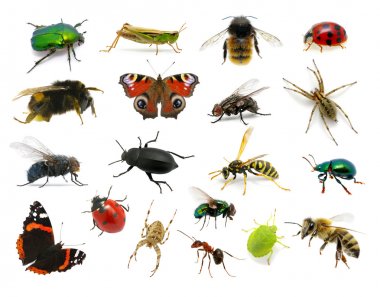
Insects play a crucial role in maintaining ecological balance by pollinating plants and recycling nutrients. This article explores the significance of insects through Quranic references and scientific research, highlighting their ecological importance and the divine wisdom behind their creation.
Quranic References to Insects:
The Quran acknowledges the creation and importance of various creatures, including insects, emphasizing the wisdom in their existence and roles in the natural world:
Surah An-Nahl (16:68-69):
“And your Lord inspired to the bee, ‘Take for yourself among the mountains, houses, and among the trees and [in] that which they construct. Then eat from all the fruits and follow the ways of your Lord laid down [for you].’ There emerges from their bellies a drink, varying in colors, in which there is healing for people. Indeed in that is a sign for a people who give thought.”
This verse highlights the remarkable abilities of bees, their role in producing honey, and their contribution to human health, underscoring the divine purpose in their creation.
Surah Al-Baqarah (2:26):
“Indeed, Allah is not timid to present an example – that of a mosquito or what is smaller than it. And those who have believed know that it is the truth from their Lord. But as for those who disbelieve, they say, ‘What did Allah intend by this as an example?’ He misleads many thereby and guides many thereby. And He misleads not except the defiantly disobedient.”
This verse mentions the mosquito, emphasizing that even the smallest of creatures have a purpose and significance in Allah’s creation.
Scientific Insights on Insects:
Pollination:
Insects, particularly bees, butterflies, moths, and beetles, are essential pollinators. They transfer pollen from one flower to another while feeding on nectar, facilitating the reproduction of many plants, including crops vital for human consumption.
Nutrient Recycling:
Insects such as ants, beetles, and flies play a significant role in decomposing organic matter. They break down dead plants, animals, and waste, recycling nutrients back into the soil, which supports plant growth and maintains soil health.
Soil Aeration:
Burrowing insects like ants and beetles aerate the soil, improving its structure and promoting the movement of water and nutrients. This process enhances soil fertility and supports healthy plant growth.
Food Web Dynamics:
Insects are a crucial part of the food web, serving as a primary food source for many animals, including birds, amphibians, reptiles, and mammals. Their presence supports the survival of various species and maintains ecological balance.
Technological Advances in Insect Research:
Pollinator Conservation:
Advances in entomology and ecology help scientists understand the behavior and habitat requirements of pollinators. Conservation efforts focus on protecting and restoring habitats to support healthy insect populations.
Pest Management:
Integrated Pest Management (IPM) strategies use scientific research to control pest populations through natural predators, biological controls, and environmentally friendly practices, reducing the reliance on chemical pesticides.
Climate Change Impact:
Research on the effects of climate change on insect populations and behaviors provides insights into how shifting temperatures and weather patterns impact pollination and nutrient recycling processes.
Conclusion:
Insects are indispensable to ecosystems, playing critical roles in pollination and nutrient recycling. The Quran acknowledges the importance and divine purpose of insects, emphasizing their contributions to the natural world. Scientific research further elucidates the ecological functions of insects, highlighting their significance in maintaining biodiversity and ecosystem health.
By integrating Quranic insights with scientific knowledge, we can better appreciate the essential roles insects play in our environment and the necessity of protecting these vital creatures for the health of our planet and the well-being of future generations.
Reptiles: Controllers of Pest Populations
Reptiles play a significant role in maintaining ecological balance by controlling pest populations. This article explores the importance of reptiles through Quranic references and scientific research, highlighting their ecological contributions and the divine wisdom behind their creation.
Quranic References to Reptiles:
The Quran emphasizes the creation of all living beings with purpose and wisdom, reflecting on their roles within the natural world. While reptiles are not specifically mentioned, the general principles regarding the creation and significance of animals apply to them as well:
Surah Al-An’am (6:38):
“And there is no creature on or within the earth or bird that flies with its wings except [that they are] communities like you. We have not neglected in the Register a thing. Then unto their Lord they will be gathered.”
This verse emphasizes that all creatures, including reptiles, form communities and have specific roles in the ecosystem.
Surah An-Nur (24:45):
“Allah has created from water every living creature. Some of them crawl on their bellies, some walk on two legs, and some walk on four. Allah creates what He wills. Indeed, Allah is over all things competent.”
This verse highlights the diversity of Allah’s creation, including creatures that crawl on their bellies, which encompasses many reptiles.
Scientific Insights on Reptiles:
Pest Control:
Reptiles, such as lizards and snakes, are natural predators of various pests, including insects, rodents, and other small animals. By preying on these species, reptiles help regulate their populations and prevent them from becoming overabundant.
Food Web Dynamics:
Reptiles are an integral part of the food web. They serve as both predators and prey, maintaining the balance of species within their ecosystems. Their presence supports biodiversity and ecological stability.
Ecosystem Health Indicators:
The presence and health of reptile populations can indicate the overall health of an ecosystem. Changes in their populations can signal environmental shifts or degradation, making them valuable for ecological monitoring.
Soil Aeration and Seed Dispersal:
Some reptiles, like tortoises, contribute to soil aeration and seed dispersal. Their burrowing activities improve soil structure, and their feeding habits help spread plant seeds, supporting plant diversity and growth.
Technological Advances in Reptile Research:
Habitat Conservation:
Advances in herpetology and ecology provide insights into the habitat requirements of reptiles. Conservation efforts focus on protecting and restoring habitats critical for their survival, addressing threats like habitat loss and climate change.
Biodiversity Studies:
Genetic and ecological studies of reptiles enhance our understanding of their diversity, evolutionary history, and ecological roles. This knowledge informs conservation strategies and helps protect endangered species.
Environmental Impact Assessments:
Research on the impact of human activities on reptile populations guides environmental policies and practices, promoting sustainable development and biodiversity conservation.
Conclusion:
Reptiles play essential roles in controlling pest populations and maintaining ecological balance. The Quran, while not specifically mentioning reptiles, emphasizes the purposeful creation of all living beings and their roles within the broader ecological framework. Scientific research further elucidates the importance of reptiles in various ecological processes and highlights the need for conservation efforts to protect these vital components of our natural world.
By integrating Quranic insights with scientific knowledge, we can better appreciate the roles reptiles play in maintaining the health and stability of ecosystems and the necessity of protecting these creatures for the well-being of our planet and future generations.
Amphibians: Indicators of Ecosystem Health
Amphibians are vital components of ecosystems, often serving as indicators of environmental health due to their sensitivity to changes in their habitats. This article explores the significance of amphibians through Quranic references and scientific research, highlighting their ecological contributions and the divine wisdom behind their creation.
Quranic References to Amphibians:
The Quran emphasizes the creation of all living beings with purpose and wisdom, reflecting on their roles within the natural world. While amphibians are not specifically mentioned, the general principles regarding the creation and significance of animals apply to them as well:
Surah An-Nur (24:45):
“Allah has created from water every living creature. Some of them crawl on their bellies, some walk on two legs, and some walk on four. Allah creates what He wills. Indeed, Allah is over all things competent.”
This verse highlights the diversity of Allah’s creation, including creatures that are born in water and may later move on land, which encompasses many amphibians.
Surah Al-An’am (6:38):
“And there is no creature on or within the earth or bird that flies with its wings except [that they are] communities like you. We have not neglected in the Register a thing. Then unto their Lord they will be gathered.”
This verse emphasizes that all creatures, including amphibians, form communities and have specific roles in the ecosystem.
Scientific Insights on Amphibians:
Environmental Sensitivity:
Amphibians, such as frogs, toads, salamanders, and newts, are highly sensitive to environmental changes due to their permeable skin and complex life cycles that involve both aquatic and terrestrial habitats. This sensitivity makes them excellent indicators of ecosystem health.
Bioindicators:
The presence, absence, or health of amphibian populations can reveal important information about the quality of the environment, including water quality, pollution levels, and habitat integrity. Declines in amphibian populations often signal environmental degradation.
Nutrient Cycling:
Amphibians play a role in nutrient cycling by consuming insects and other small invertebrates, contributing to the balance of food webs and aiding in the decomposition process through their waste products.
Pest Control:
Amphibians help control pest populations, including mosquitoes and other insects, which can have significant impacts on human health and agriculture.
Technological Advances in Amphibian Research:
Conservation Efforts:
Advances in herpetology and conservation biology provide insights into the habitat requirements and threats faced by amphibians. Conservation strategies focus on habitat preservation, pollution control, and mitigating climate change impacts.
Environmental Monitoring:
Researchers use amphibians as bioindicators in environmental monitoring programs to assess the health of ecosystems. Techniques include population surveys, health assessments, and studying the impacts of contaminants.
Genetic Studies:
Genetic research on amphibians helps understand their evolutionary history, population structure, and responses to environmental stressors, informing conservation efforts and species protection plans.
Conclusion:
Amphibians serve as crucial indicators of ecosystem health due to their sensitivity to environmental changes. The Quran emphasizes the purposeful creation of all living beings and their roles within the broader ecological framework. Scientific research further elucidates the importance of amphibians in various ecological processes and highlights the need for conservation efforts to protect these vital components of our natural world.
By integrating Quranic insights with scientific knowledge, we can better appreciate the roles amphibians play in maintaining the health and stability of ecosystems and the necessity of protecting these creatures for the well-being of our planet and future generations.
Coral Reefs: Pillars of Marine Biodiversity
Coral reefs are vital ecosystems that support a vast array of marine life, contributing significantly to marine biodiversity. This article explores the importance of coral reefs through Quranic references and scientific research, highlighting their ecological contributions and the divine wisdom behind their creation.
Quranic References to Coral Reefs:
While coral reefs are not mentioned explicitly in the Quran, the broader context of the Quran highlights the significance of all marine life and the wisdom in Allah’s creation. The Quran encourages contemplation of the natural world and recognition of Allah’s creative power.
Surah An-Nur (24:45):
“Allah has created from water every living creature. Some of them crawl on their bellies, some walk on two legs, and some walk on four. Allah creates what He wills. Indeed, Allah is over all things competent.”
This verse highlights the diversity of Allah’s creation in aquatic environments, which includes coral reefs and the marine life they support.
Surah Ar-Rahman (55:19-22):
“He released the two seas, meeting [side by side]; Between them is a barrier [so] neither of them transgresses. So which of the favors of your Lord would you deny? From both of them emerge pearl and coral.”
This verse mentions the emergence of pearls and coral from the seas, indicating the richness and beauty of marine life created by Allah.
Scientific Insights on Coral Reefs:
Biodiversity Hotspots:
Coral reefs are among the most diverse ecosystems on the planet, housing approximately 25% of all marine species, including fish, mollusks, crustaceans, and many others. This biodiversity is crucial for the stability and productivity of ocean environments.
Ecosystem Services:
Coral reefs provide numerous ecosystem services, such as coastal protection, food resources, and tourism opportunities. They act as natural barriers, protecting shorelines from erosion and storm surges.
Nutrient Cycling:
Reefs play a key role in nutrient cycling, supporting complex food webs and maintaining the health of marine environments. They facilitate the recycling of nutrients, which supports marine life at various trophic levels.
Medicinal Resources:
Coral reefs are a source of novel compounds for pharmaceuticals. Many marine organisms found in reefs produce unique chemicals that have potential uses in medicine, including treatments for cancer and other diseases.
Technological Advances in Coral Reef Research
Coral Restoration:
Advances in marine biology and conservation techniques have led to the development of coral restoration projects. These initiatives involve growing corals in nurseries and transplanting them to damaged reef areas to promote recovery and resilience.
Remote Sensing and Monitoring:
Modern technology, such as satellite imagery and underwater drones, allows scientists to monitor reef health, track changes over time, and assess the impacts of human activities and climate change on these ecosystems.
Climate Change Mitigation:
Research on the effects of climate change on coral reefs informs strategies to mitigate impacts, such as reducing carbon emissions and protecting critical habitats. Efforts are also being made to breed and transplant heat-resistant coral species.
Conclusion:
Coral reefs are essential to marine biodiversity and provide numerous ecological, economic, and cultural benefits. While not explicitly mentioned in the Quran, the principles of recognizing and appreciating the diversity and wisdom in Allah’s creation apply to these vital ecosystems. Scientific research further underscores the importance of coral reefs and the need for their conservation.
By integrating Quranic insights with scientific knowledge, we can better appreciate the roles coral reefs play in maintaining the health and stability of marine environments and the necessity of protecting these ecosystems for the well-being of our planet and future generations.
Bees: Crucial for Pollination
Bees play an indispensable role in pollination, which is vital for the growth of many plants and the production of food. This article explores the significance of bees through Quranic references and scientific research, highlighting their ecological contributions and the divine wisdom behind their creation.
Quranic References to Bees:
The Quran explicitly mentions bees, emphasizing their importance and the wisdom in their creation:
Surah An-Nahl (16:68-69):
“And your Lord inspired to the bee, ‘Take for yourself among the mountains, houses, and among the trees and [in] that which they construct. Then eat from all the fruits and follow the ways of your Lord laid down [for you].’ There emerges from their bellies a drink, varying in colors, in which there is healing for people. Indeed in that is a sign for a people who give thought.”
This verse highlights the role of bees in producing honey, which has healing properties, and their intricate behavior that follows divine inspiration.
Scientific Insights on Bees:
Pollination:
Bees are primary pollinators for a vast array of plants, including many crops that humans rely on for food. Approximately 75% of the world’s flowering plants and about 35% of global food crops depend on animal pollinators, with bees being among the most important.
Biodiversity Support:
By pollinating plants, bees contribute to biodiversity. They help maintain healthy ecosystems that support diverse wildlife. This biodiversity is crucial for ecosystem resilience and productivity.
Economic Value:
Pollination by bees has immense economic value. It is estimated that pollinators contribute over $235 billion to $577 billion annually to global food production. Without bees, many crops would see reduced yields, impacting food supply and prices.
Ecological Indicators:
Bees serve as indicators of environmental health. Their presence and health can reflect the state of the environment, including the impacts of pesticides, habitat loss, and climate change.
Technological Advances in Bee Research:
Bee Monitoring:
Advances in technology, such as radio frequency identification (RFID) tags and micro-sensors, allow researchers to monitor bee behavior, health, and movement patterns. This data helps in understanding the factors affecting bee populations and devising conservation strategies.
Habitat Restoration:
Research into the habitat requirements of bees has led to efforts to restore and create environments that support their populations. This includes planting wildflowers, preserving natural habitats, and reducing pesticide use.
Genetic Studies:
Genetic research on bees enhances our understanding of their biology, behavior, and responses to environmental stressors. This knowledge is critical for breeding programs aimed at improving bee resilience to diseases and climate change.
Conclusion:
Bees are crucial for pollination, supporting both biodiversity and food production. The Quran explicitly mentions bees, highlighting their importance and the wisdom in their creation. Scientific research further underscores the essential roles bees play in ecosystems and the need for their conservation.
By integrating Quranic insights with scientific knowledge, we can better appreciate the roles bees play in maintaining the health and stability of ecosystems and the necessity of protecting these vital pollinators for the well-being of our planet and future generations.
Butterflies: Indicators of a Healthy Environment
Butterflies are not only beautiful creatures but also important indicators of a healthy environment. This article explores the significance of butterflies through Quranic references and scientific research, highlighting their ecological contributions and the divine wisdom behind their creation.
Quranic References to Butterflies:
While butterflies are not explicitly mentioned in the Quran, the text emphasizes the importance of all living creatures and their roles in the natural world. The general principles regarding the creation and significance of animals apply to butterflies as well.
Surah Al-An’am (6:38):
“And there is no creature on [or within] the earth or bird that flies with its wings except [that they are] communities like you. We have not neglected in the Register a thing. Then unto their Lord they will be gathered.”
This verse highlights that all creatures, including butterflies, form communities and have specific roles within ecosystems.
Surah An-Nahl (16:68-69):
“And your Lord inspired to the bee, ‘Take for yourself among the mountains, houses, and among the trees and [in] that which they construct. Then eat from all the fruits and follow the ways of your Lord laid down [for you].’ There emerges from their bellies a drink, varying in colors, in which there is healing for people. Indeed in that is a sign for a people who give thought.”
Although this verse specifically mentions bees, it underscores the divine inspiration and purpose behind the behavior of insects, including butterflies.
Scientific Insights on Butterflies:
Environmental Indicators:
Butterflies are highly sensitive to environmental changes, making them excellent indicators of ecosystem health. Changes in butterfly populations can signal shifts in climate, habitat quality, and the presence of pollutants.
Pollination:
Like bees, butterflies contribute to pollination. They play a crucial role in the reproductive processes of many flowering plants, helping to maintain plant diversity and food webs.
Biodiversity Support:
Butterflies contribute to the biodiversity of ecosystems. Their presence supports the health of food chains, providing food for other species, including birds and small mammals.
Climate Change Indicators:
Butterfly populations and migration patterns are sensitive to climate change. Studying these patterns helps scientists understand the broader impacts of climate change on biodiversity and ecosystems.
Technological Advances in Butterfly Research:
Population Monitoring:
Advances in technology, such as geographic information systems (GIS) and remote sensing, allow researchers to monitor butterfly populations and their habitats. This data helps in tracking changes over time and assessing the impacts of environmental stressors.
Conservation Efforts:
Research on the habitat requirements and threats faced by butterflies informs conservation strategies. Efforts include habitat restoration, creation of butterfly corridors, and reducing pesticide use.
Genetic Studies:
Genetic research on butterflies enhances our understanding of their evolution, population structure, and responses to environmental changes. This knowledge aids in developing conservation plans and protecting butterfly species.
Conclusion:
Butterflies serve as crucial indicators of a healthy environment, reflecting the state of ecosystems and the impacts of environmental changes. The Quran emphasizes the purposeful creation of all living beings and their roles within the broader ecological framework. Scientific research further underscores the importance of butterflies and the need for their conservation.
By integrating Quranic insights with scientific knowledge, we can better appreciate the roles butterflies play in maintaining the health and stability of ecosystems and the necessity of protecting these delicate yet vital creatures for the well-being of our planet and future generations.
Earthworms: Enhancers of Soil Health
Earthworms play a critical role in improving soil health and fertility. This article explores the significance of earthworms through Quranic references and scientific research, highlighting their ecological contributions and the divine wisdom behind their creation.
Quranic References to Earthworms:
While earthworms are not explicitly mentioned in the Quran, the text emphasizes the importance of all creatures in maintaining the balance of the natural world. The principles regarding the creation and significance of animals apply to earthworms as well.
Surah An-Nahl (16:10-11):
“It is He who sends down rain from the sky; from it is drink and from it is foliage in which you pasture [animals]. He causes to grow for you thereby the crops, the olives, the date palms, the grapes, and from all the fruits. Indeed, in that is a sign for a people who give thought.”
This verse highlights the importance of rain in nurturing plants and crops. Earthworms play a crucial role in this process by enhancing soil quality and fertility.
Surah Al-An’am (6:99):
“And it is He who sends down rain from the sky, and We produce thereby the growth of all things. We produce from it greenery from which We produce grains arranged in layers. And from the palm trees – of its emerging fruit are clusters hanging low. And [We produce] gardens of grapevines, olives, and pomegranates, similar yet varied. Look at [each of] its fruit when it yields and [at] its ripening. Indeed, in that are signs for a people who believe.”
This verse emphasizes the process of plant growth facilitated by rain and soil, indirectly acknowledging the role of earthworms in maintaining soil health.
Scientific Insights on Earthworms:
Soil Aeration:
Earthworms burrow through the soil, creating channels that allow air to penetrate deeper layers. This aeration improves soil structure and promotes root growth.
Nutrient Recycling:
Earthworms decompose organic matter, breaking it down into simpler compounds. This decomposition releases nutrients back into the soil, making them available for plant uptake.
Soil Fertility:
The casts (excrement) of earthworms are rich in nutrients and beneficial microorganisms. These casts improve soil fertility and enhance plant growth.
Water Infiltration:
The burrowing action of earthworms increases soil porosity, enhancing water infiltration and reducing surface runoff. This helps maintain soil moisture and reduces erosion.
Technological Advances in Earthworm Research
Soil Health Monitoring:
Advances in soil science and technology allow researchers to study the impact of earthworms on soil health. Techniques such as soil sampling and analysis help assess soil properties and the presence of earthworm activity.
Vermiculture:
Vermiculture is the cultivation of earthworms to produce vermicompost, a nutrient-rich organic fertilizer. This practice leverages the natural decomposition abilities of earthworms to enhance soil fertility sustainably.
Environmental Indicators:
Earthworms are used as bioindicators to assess soil health and the impact of environmental pollutants. Their presence and activity levels provide insights into soil quality and ecosystem health.
Conclusion:
Earthworms are vital for improving soil health and fertility, playing an essential role in maintaining healthy ecosystems. While not explicitly mentioned in the Quran, the principles of recognizing and appreciating the diversity and wisdom in Allah’s creation apply to these beneficial creatures. Scientific research further underscores the importance of earthworms and the need for their conservation.
By integrating Quranic insights with scientific knowledge, we can better appreciate the roles earthworms play in maintaining the health and stability of ecosystems and the necessity of protecting these essential organisms for the well-being of our planet and future generations.
Intelligence - Enables problem solving
Intelligence is a remarkable gift from Allah that allows humans to solve problems, innovate, and understand the world around them. Both the Quran and scientific research provide insights into the nature and significance of intelligence. This exploration will delve into how the Quran addresses human intellect and its purpose, complemented by scientific explanations of intelligence and problem-solving.
Quranic Perspective on Intelligence:
The Quran frequently emphasizes the importance of intellect, reasoning, and knowledge. Several verses highlight the value of using one’s mind to understand the signs of Allah and live a righteous life.
Key Quranic Verses:
Surah Al-Baqarah (2:269):
“He grants wisdom to whom He pleases, and he to whom wisdom is granted is indeed granted abundant good. But none remember except men of understanding.”
This verse underscores that wisdom, a form of intelligence, is a precious gift from Allah, and it is given to those He wills. It highlights the importance of using intellect to gain wisdom.
Surah Al-Ankabut (29:43):
“And these examples We present to the people, but none will understand them except those of knowledge.”
Allah presents parables and signs in the Quran, indicating that only those who use their intellect and seek knowledge can comprehend their deeper meanings.
Surah Az-Zumar (39:9):
“Are those who know equal to those who do not know? Only they will remember [who are] people of understanding.”
This verse highlights the distinction between those who use their intelligence to seek knowledge and those who do not, emphasizing the virtue of intellectual pursuit.
Prophetic Teachings:
The teachings of Prophet Muhammad (peace be upon him) also emphasize the importance of seeking knowledge and using one’s intellect. For instance, the Prophet said:
“Seeking knowledge is an obligation upon every Muslim.” (Sunan Ibn Majah)
This Hadith reinforces the value of intellectual growth and the pursuit of knowledge in Islam.
Scientific Explanations of Intelligence:
Cognitive Abilities:
Intelligence encompasses a range of cognitive abilities including reasoning, problem-solving, planning, abstract thinking, and comprehension. These abilities enable humans to adapt to new situations, learn from experience, and tackle complex problems.
Neuroscience and Intelligence:
Scientific research indicates that intelligence is linked to the structure and function of the brain. Key areas involved include the prefrontal cortex, which is responsible for higher-order cognitive functions such as decision-making and problem-solving.
Intelligence Quotient (IQ):
IQ tests are commonly used to measure intellectual abilities. While IQ is a useful indicator, it represents only a part of the broader concept of intelligence, which also includes emotional and social intelligence.
Problem-Solving Skills:
Effective problem-solving requires a combination of logical reasoning, creativity, and critical thinking. These skills are essential for scientific innovation, technological advancements, and everyday decision-making.
Emotional Intelligence:
Emotional intelligence (EI) refers to the ability to recognize, understand, and manage one’s emotions, as well as the emotions of others. EI plays a crucial role in effective communication, empathy, and conflict resolution.
Conclusion:
Intelligence is a profound and multifaceted gift from Allah that enables humans to navigate and solve the complexities of life. The Quran encourages the use of intellect to understand divine signs and live according to Allah’s guidance. Scientific research further elucidates the mechanisms and components of intelligence, underscoring its importance in problem-solving and innovation. By embracing both religious and scientific perspectives, one can appreciate the full scope of human intelligence and its significance in achieving personal and societal growth.
Emotions - Facilitate relationships
Emotions play a critical role in human interactions and relationships. They help in understanding, empathizing, and connecting with others. Both the Quran and the teachings of Prophet Muhammad (peace be upon him) provide profound insights into the significance of emotions in facilitating relationships. Scientific research further supports and expands on these concepts, highlighting the biological and psychological aspects of emotions.
Quranic Teachings on Emotions and Relationships:
The Quran offers guidance on managing emotions and maintaining harmonious relationships. It emphasizes the importance of compassion, mercy, and patience.
Key Quranic Verses:
Surah Ar-Rum (30:21):
“And among His Signs is that He created for you from yourselves mates that you may find tranquility in them; and He placed between you affection and mercy. Indeed, in that are signs for a people who give thought.”
This verse highlights the emotional bond between spouses, characterized by affection and mercy, essential for a peaceful and harmonious relationship.
Surah Al-Hujurat (49:10):
“The believers are but brothers, so make settlement between your brothers. And fear Allah that you may receive mercy.”
This verse emphasizes the brotherhood among believers, encouraging the resolution of conflicts and the maintenance of harmonious relationships.
Surah Al-Furqan (25:63):
“And the servants of the Most Merciful are those who walk upon the earth easily, and when the ignorant address them harshly, they say words of peace.”
This verse advocates for calmness and patience in the face of provocation, promoting peaceful interactions.
Prophetic Teachings on Emotions and Relationships:
Prophet Muhammad (peace be upon him) provided numerous teachings on the importance of emotions in facilitating relationships.
Compassion and Mercy:
“The merciful are shown mercy by the Merciful. Be merciful on the earth, and you will be shown mercy from above.” (Sunan At-Tirmidhi)
This Hadith emphasizes the importance of being merciful and compassionate towards others.
Kindness:
“He who does not show mercy to our young ones, or acknowledge the rights of our elders, is not one of us.” (Sunan Abi Dawood)
This Hadith highlights the importance of kindness and respect in maintaining relationships.
Forgiveness:
“Whoever does not show mercy will not be shown mercy.” (Sahih Muslim)
This Hadith underscores the importance of forgiveness and mercy in fostering healthy relationships.
Scientific Research on Emotions and Relationships:
Emotional Intelligence (EI):
Emotional intelligence involves the ability to recognize, understand, and manage one’s emotions, as well as the emotions of others. High EI is associated with better interpersonal relationships, empathy, and conflict resolution.
Empathy:
Empathy, the ability to understand and share the feelings of others, is crucial for building and maintaining relationships. It fosters connection, trust, and cooperation.
Social Bonding:
Emotions play a significant role in social bonding. Positive emotions such as love, joy, and gratitude strengthen relationships, while negative emotions like anger and jealousy can strain them.
Communication:
Effective emotional communication is essential for relationship maintenance. Expressing emotions appropriately and responding to others’ emotions with empathy and understanding promotes healthy interactions.
Psychological Well-being:
Healthy emotional relationships contribute to psychological well-being, reducing stress and enhancing life satisfaction. Strong social support networks are linked to better mental health outcomes.
Conclusion:
Emotions are a divine gift that facilitate human relationships and enhance social cohesion. The Quran and the teachings of Prophet Muhammad (peace be upon him) emphasize the importance of compassion, mercy, and patience in maintaining harmonious relationships. Scientific research corroborates these teachings, highlighting the role of emotional intelligence, empathy, and effective communication in fostering strong interpersonal connections. By integrating these religious and scientific perspectives, individuals can cultivate meaningful and supportive relationships, contributing to personal and communal well-being.
Speech - Allows communication
Speech is a powerful tool bestowed upon humans by Allah, enabling effective communication and the sharing of ideas. The Quran and the teachings of Prophet Muhammad (peace be upon him) emphasize the importance of using speech wisely and responsibly. Scientific research also provides insights into the mechanics and significance of speech in human interactions.
Quranic Teachings on Speech and Communication:
The Quran places great emphasis on the proper use of speech, highlighting its potential to build relationships and spread wisdom, as well as its capacity to cause harm if misused.
Key Quranic Verses:
Surah Al-Baqarah (2:83):
“And speak to people good words and establish prayer and give zakah.”
This verse underscores the importance of speaking kindly and positively to others as part of righteous conduct.
Surah Al-Isra (17:53):
“And tell My servants to say that which is best. Indeed, Satan induces dissension among them. Indeed, Satan is ever, to mankind, a clear enemy.”
Here, Allah instructs His servants to use the best and most constructive speech, warning that harmful speech can lead to discord.
Surah Fussilat (41:33):
“And who is better in speech than one who invites to Allah and does righteousness and says, ‘Indeed, I am of the Muslims.'”
This verse highlights that the best use of speech is to invite others to righteousness and to acknowledge one’s faith in Islam.
Prophetic Teachings on Speech and Communication:
Prophet Muhammad (peace be upon him) provided extensive guidance on the ethical use of speech, emphasizing truthfulness, kindness, and restraint.
Truthfulness:
“Speak the truth even if it is bitter.” (Sunan Ibn Majah)
The Prophet emphasized the importance of truthfulness in all communication.
Kindness and Restraint:
“Whoever believes in Allah and the Last Day should speak a good word or remain silent.” (Sahih Bukhari and Sahih Muslim)
This Hadith encourages believers to speak only good words or to remain silent, highlighting the value of kind and considerate speech.
Avoiding Harmful Speech:
“A true believer does not taunt or curse or abuse or talk indecently.” (Sunan At-Tirmidhi)
This teaching discourages harmful and abusive language, promoting a culture of respect and decency.
Scientific Insights on Speech and Communication:
Mechanics of Speech:
Speech involves the coordination of various physiological systems, including respiratory, phonatory, articulatory, and neural mechanisms. The brain processes language and controls the muscles involved in producing speech.
Role in Social Interaction:
Speech is fundamental to human social interaction. It allows for the expression of thoughts, emotions, and intentions, facilitating cooperation and understanding.
Language Development:
Language acquisition is a critical aspect of cognitive development in children. Early interactions and communication with caregivers play a significant role in developing language skills.
Communication Disorders:
Speech and language disorders can impact an individual’s ability to communicate effectively. Early diagnosis and intervention are crucial for addressing these issues and improving communication skills.
Importance of Non-Verbal Communication:
While speech is a primary mode of communication, non-verbal cues such as gestures, facial expressions, and body language also play a significant role in conveying messages and emotions.
Conclusion:
Speech is a vital gift from Allah that facilitates communication and fosters relationships. The Quran and the teachings of Prophet Muhammad (peace be upon him) provide clear guidance on using speech wisely, promoting truthfulness, kindness, and restraint. Scientific research further illuminates the complexities of speech and its essential role in social interactions and cognitive development. By integrating these religious and scientific perspectives, individuals can appreciate the profound importance of speech and strive to use it constructively in their daily lives

©2023 – All Rights Reserved | Sheikh Touqeer Ansari